Review of the Terramaster D8 Hybrid Storage System
What IS the D8 Hybrid and why is this brand’s newest device getting a lot of media attention of late? Terramaster has been a name in the world of NAS for quite a few years, but what about DAS? Unlike Network Attached Storage, Direct Attached Storage is something that is way, WAY more common and to try and stretch your muscles in this market requires something a little special. It would be unfair to say that Terramaster are new to this market, as they have actually been in this market with numerous USB and Thunderbolt solutions since around 2018/2019. Some of these were RAID enabled, some of them JBOD and thanks to their NAS systems being supporting USB Expansions, this has helped them create a neat crossover between their portfolio of devices. However, what can Terramater bring to the table in the heavy saturated world of USB storage? Well, the D8 is trying something different, with it’s 4 HDD and 4 NVMe USB-C 10Gb connected storage that is half JBOD (loose drives) and half RAID (supporting a mirror RAID on 2x HDDs). There are certainly pros and cons here, putting this much hybrid storage behind a USB connection, as well as the benefits and drawbacks of reliance of a client machine to manage the larger RAID options out there, but the burning question is… is the D8 Hybrid actually any good? Let’s discuss it in today’s review.
Find out more about the bigger Terramaster D8 Hybrid System HERE on Kickstarter
Note – You can watch the full YouTube Review and Benchmarks of the Terramaster D5 Hybrid storage system HERE
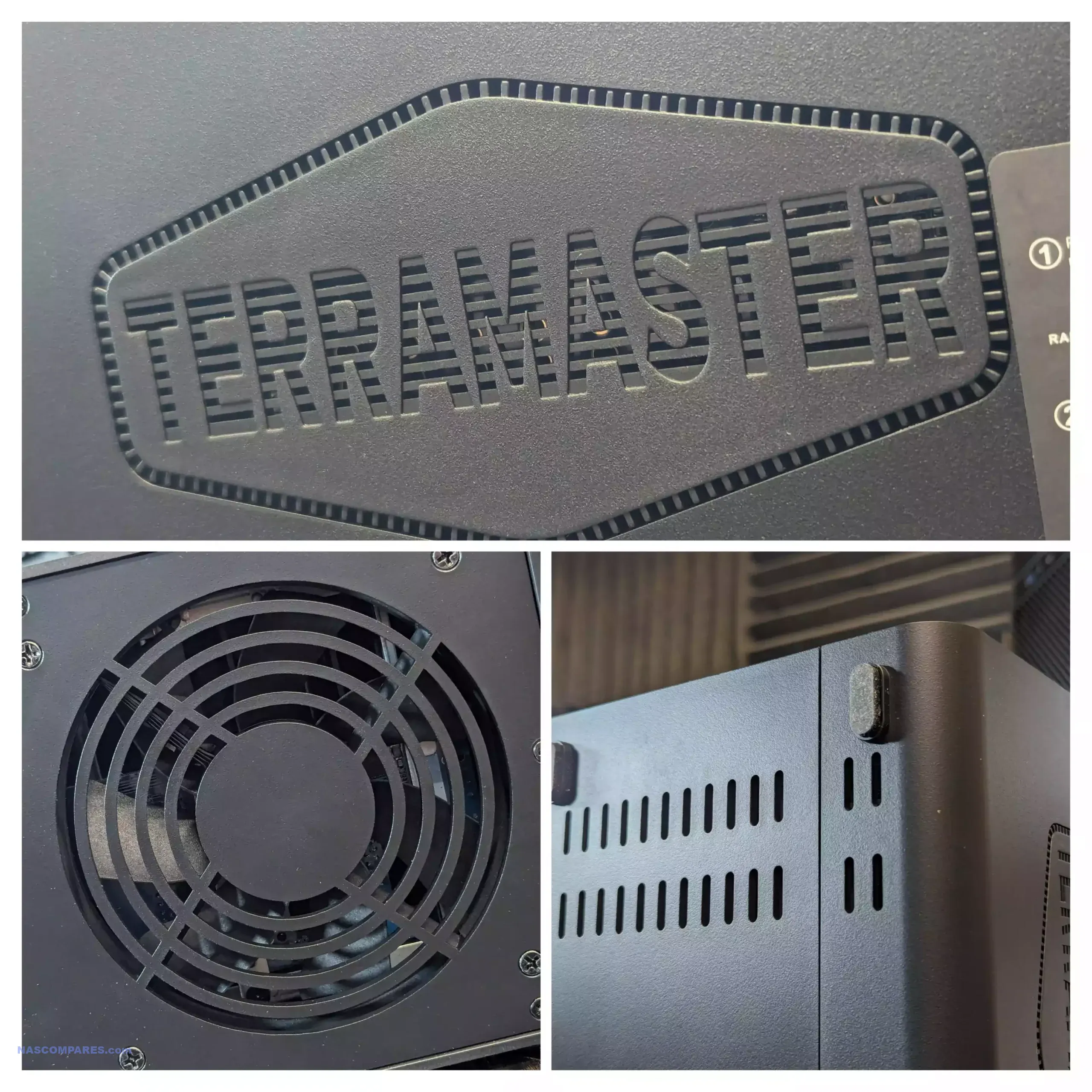
Terramaster D8 Hybrid Review – Quick Conclusion
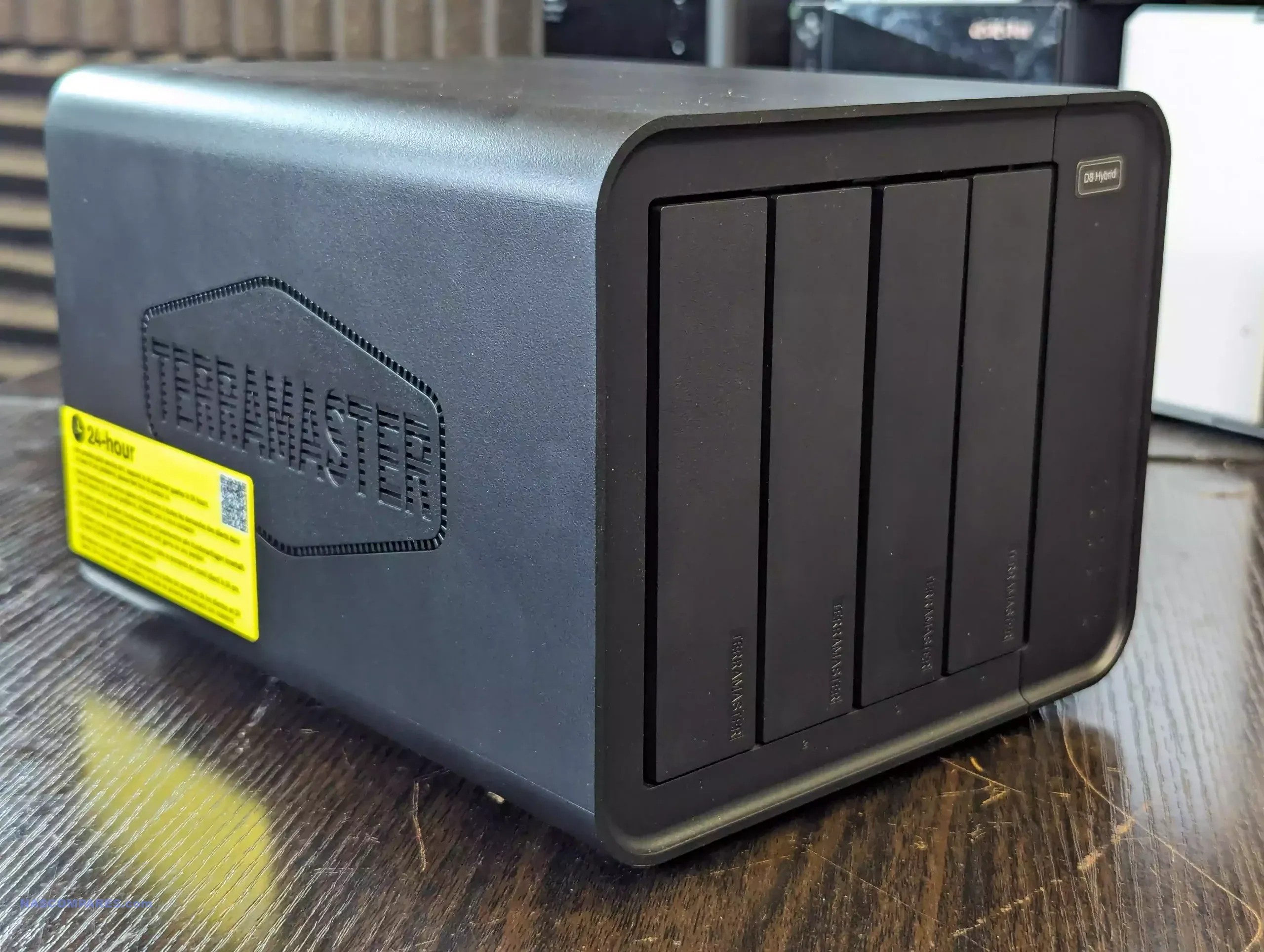
The TerraMaster D8 Hybrid excels in blending the high capacity of HDDs with the quick data access speeds of SSDs, housed within a single, efficient unit. The system’s design emphasizes user-friendliness with features like tool-less drive installation and low operational noise, making it an excellent choice for a variety of settings, from busy office environments to quiet home use. However, potential users should weigh the impact of the USB 3.2 Gen 2 interface, which, while sufficient for many applications, might not meet the needs of those requiring the fastest possible data transfer speeds. The absence of Thunderbolt technology is a noted limitation, but this is reflected in the D8 Hybrid’s competitive pricing, which targets a segment of the market more concerned with value and reliability than with leading-edge performance. The TerraMaster D8 Hybrid offers a well-rounded solution for those seeking a storage system that combines large storage capacity with respectable speeds at a cost-effective price point. Its performance, although not pushing the upper limits of current technology, provides ample support for most professional and personal storage needs, making it a worthwhile investment for a broad range of users. The thoughtful design and practical features, coupled with the device’s solid build and reliable performance within its defined limits, establish the D8 Hybrid as a standout offering in its category.
| Specification | Details |
|---|---|
| Dimensions | 222 x 179 x 154 mm |
| Weight | 1.6 kg |
| Power Supply | 90 W (100V to 240V AC) 50/60 HZ, Single Phase |
| System Fan | 80 mm x 80 mm x 25 mm (x2) |
| Maximum Noise Level | 17.3 dB(A) (Using 4 SATA HDDs/SSDs in standby mode) |
| Compatible Disk Types | 3.5″ SATA HDD, 2.5″ SATA HDD, 2.5″ SATA SSD |
| Compatible NVMe | M.2 2280 NVMe Slot (x4) |
| Raw Capacity | Up to 128TB (24 TB HDD x 2 + 8 TB NVMe x 4) |
| Supported RAID Configurations | SINGLE DISK, JBOD, RAID 0, RAID 1 |
| HDD Sleep Mode | Yes |
| Connectivity | USB3.2 Type-C gen2 (10Gbps), DC IN 12V Barrelport |
| Price | €199-299 |
Introduction to the TerraMaster D8 Hybrid
The TerraMaster D8 Hybrid is engineered to cater to the evolving demands of personal and small business storage by amalgamating traditional hard disk drives (HDDs) with the swift, modern NVMe solid-state drives (SSDs).
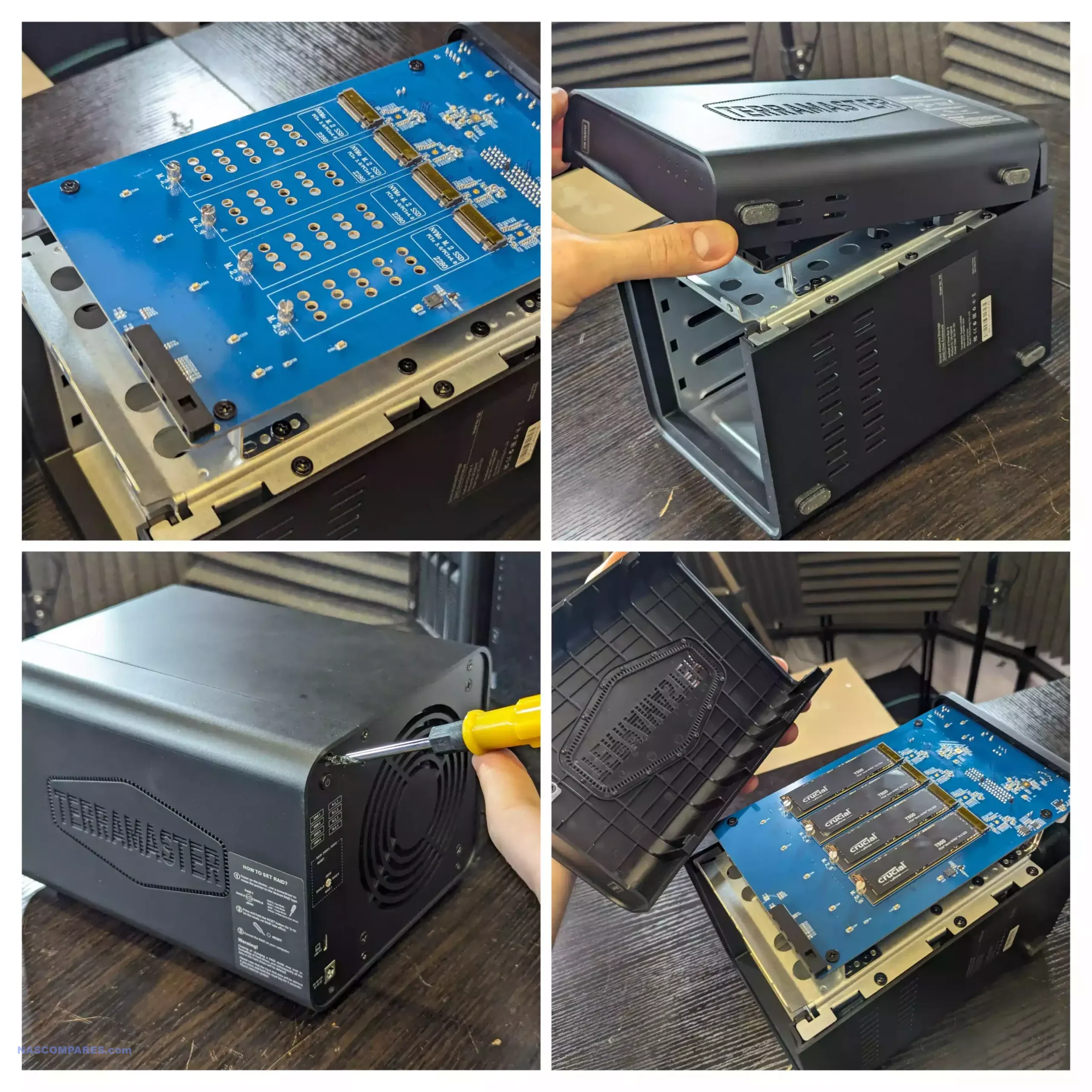 This system includes four versatile SATA bays that support both 3.5″ and 2.5″ drives and four M.2 NVMe slots, offering a broad spectrum of storage options. It utilizes USB 3.2 Gen 2 connectivity, capable of reaching speeds up to 1000 MB/s. However, this setup prompts a discussion about the possible limitations of USB connectivity when used with high-performance storage technologies, potentially creating bottlenecks that could affect data transfer speeds.
This system includes four versatile SATA bays that support both 3.5″ and 2.5″ drives and four M.2 NVMe slots, offering a broad spectrum of storage options. It utilizes USB 3.2 Gen 2 connectivity, capable of reaching speeds up to 1000 MB/s. However, this setup prompts a discussion about the possible limitations of USB connectivity when used with high-performance storage technologies, potentially creating bottlenecks that could affect data transfer speeds.
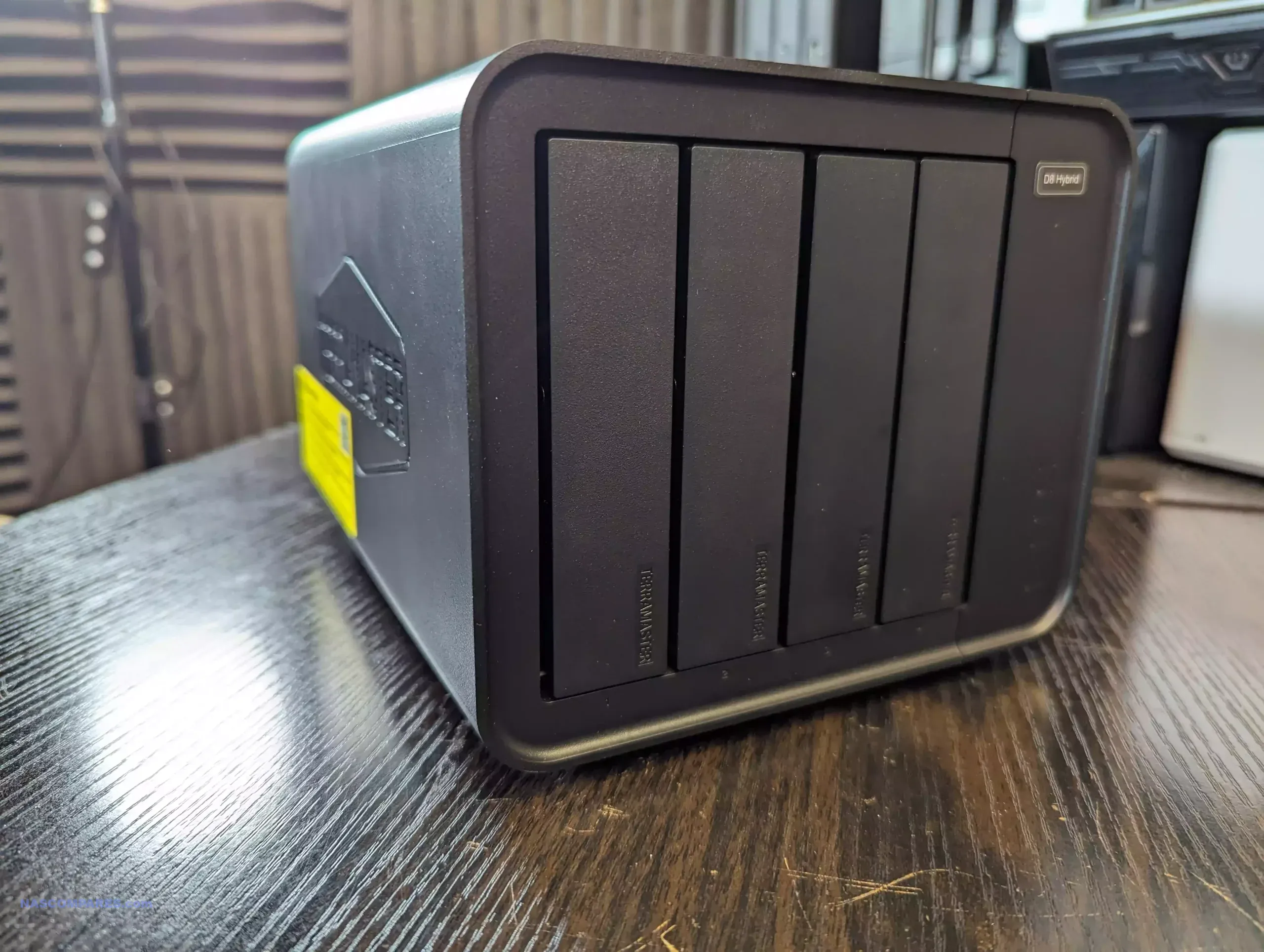
Exploring the Design and Build
The D8 Hybrid showcases a durable and user-friendly design consistent with Terramaster’s latest NAS models. The system facilitates easy installation of drives with its tool-free “click and load” mechanism, suitable even for users without technical expertise.
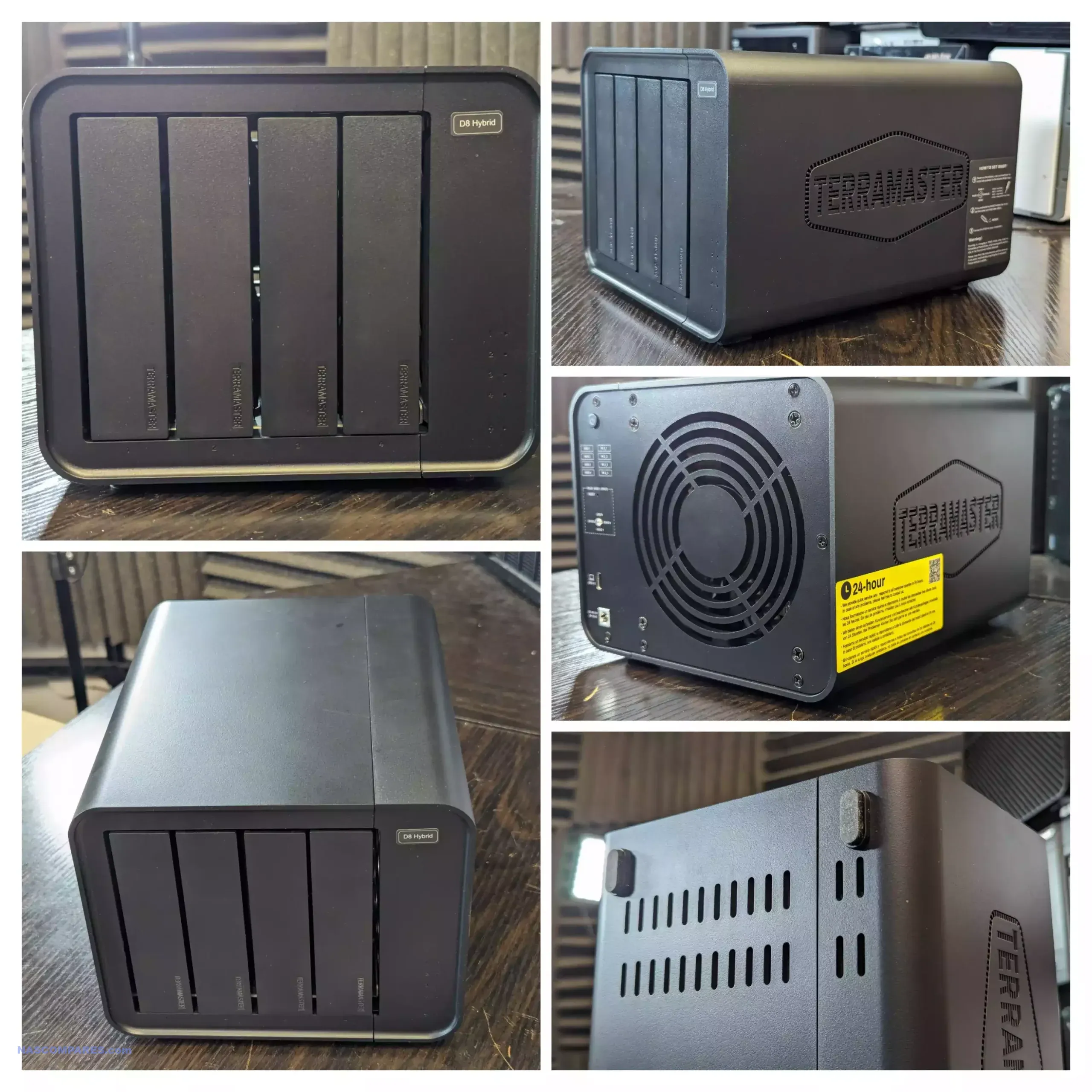
The operational noise level is moderately low, which is a crucial consideration for use in shared spaces like small offices or home environments.
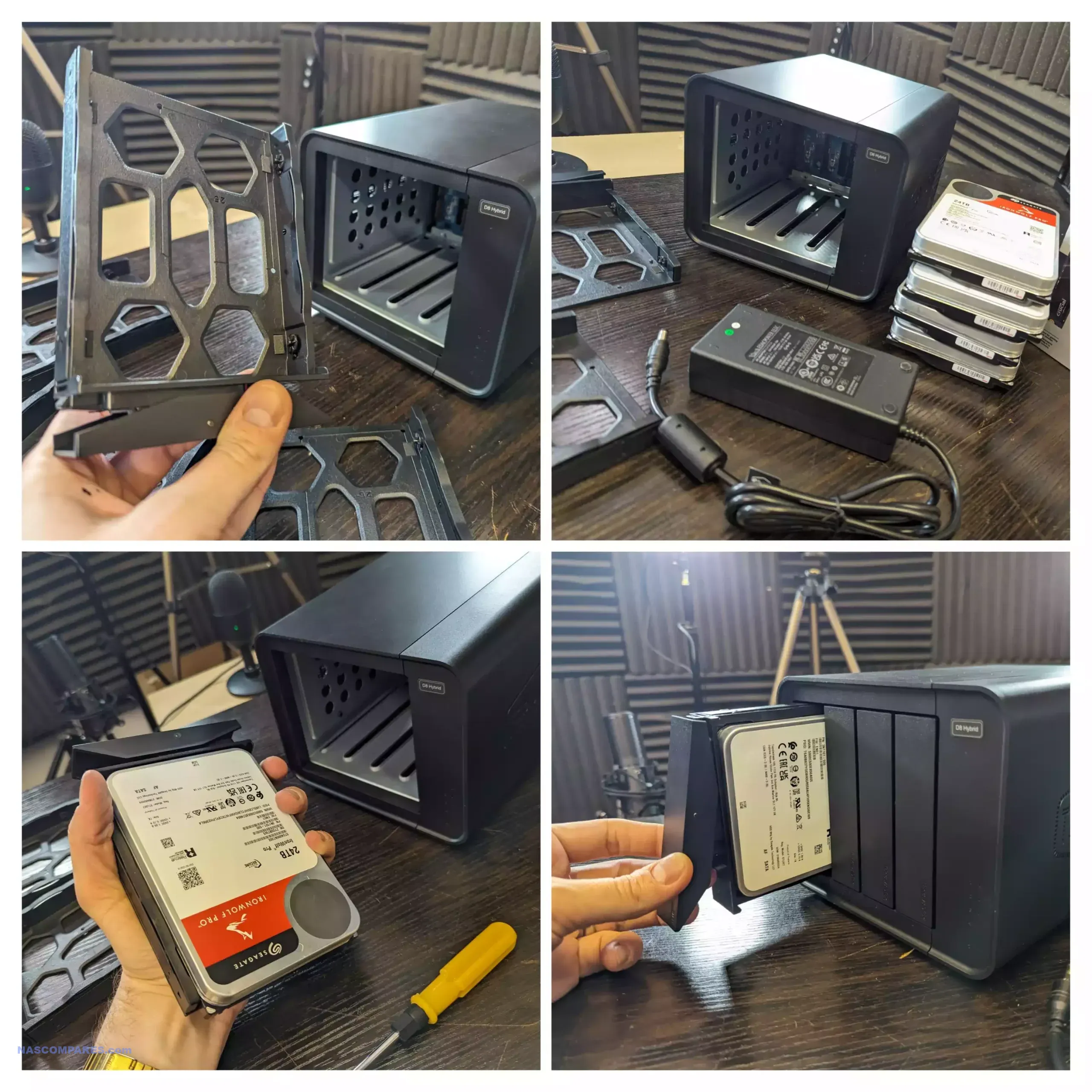
The storage solution accommodates up to four HDDs and four NVMe SSDs but opts out of including faster interface technologies such as Thunderbolt to maintain an affordable price point. This choice might restrict the performance potential of the system but makes the D8 Hybrid more accessible financially to a broader audience.
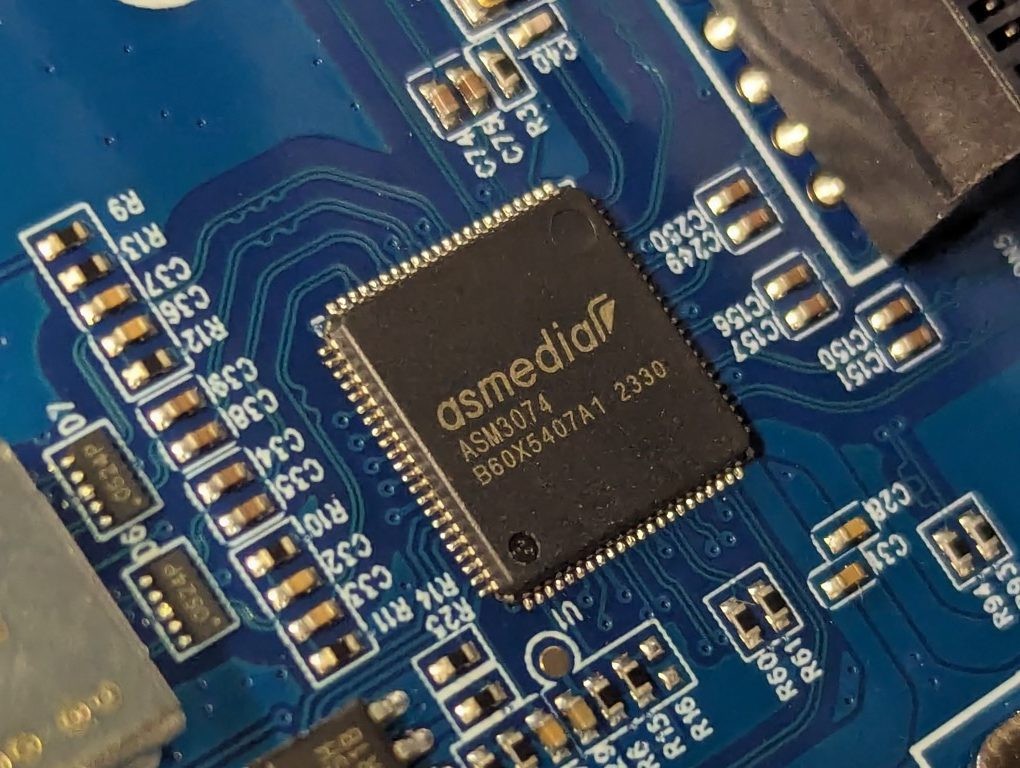
ASMedia and Realtek are two prominent players in the semiconductor industry, particularly known for their contributions to the development of chips that handle data connectivity and processing in various electronic devices.
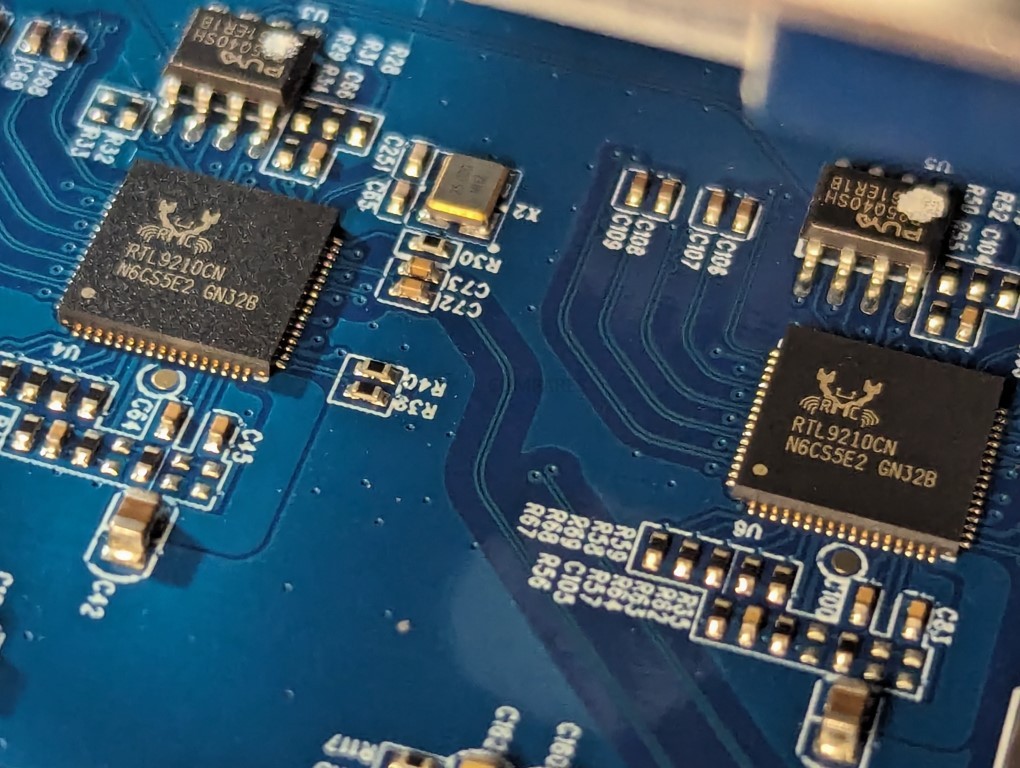
ASMedia, a subsidiary of ASUS, specializes in high-speed interface technology, particularly USB and PCIe bridge solutions. Notably, their chips are pivotal in enhancing the performance of USB connections. For example, the ASM3042 is a significant advancement in their USB controller lineup, bridging PCI Express to USB3.2 and providing support for legacy USB functions. This chip showcases ASMedia’s capability to deliver high bandwidth and efficient power management, essential for maintaining low power consumption in various devices
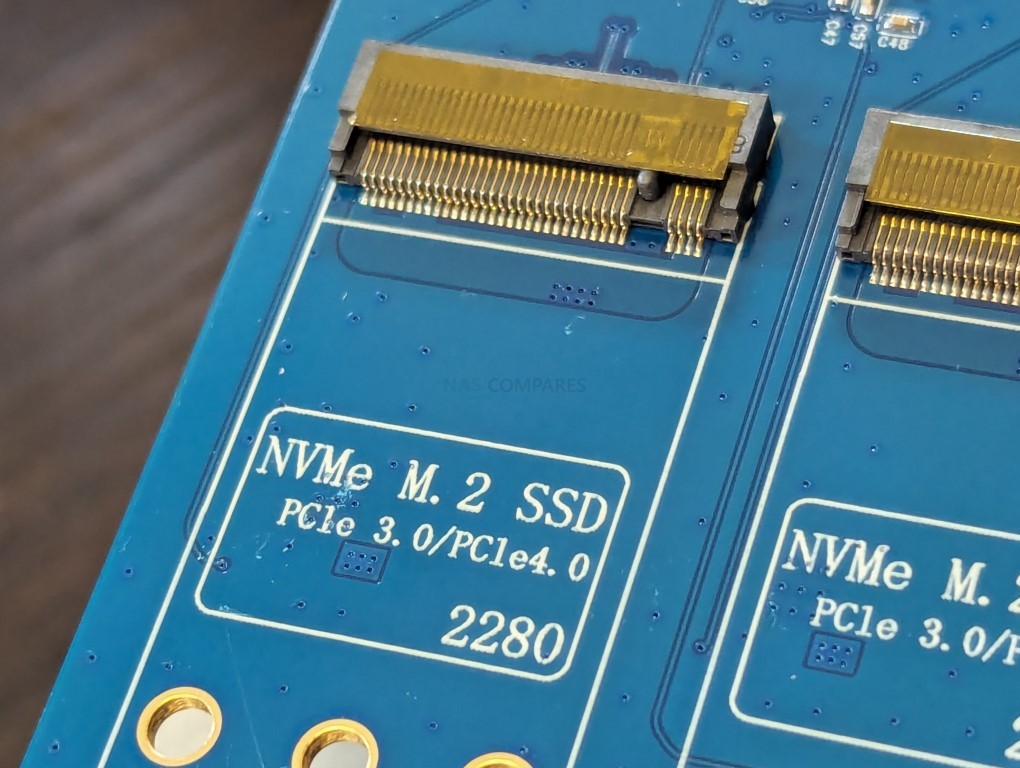
In 2022, ASMedia became one of the first to introduce a USB4 host-controller, the ASM4242, designed to support high data transmission speeds up to 64 Gbps, making it backward compatible with Thunderbolt 3 and other protocols. The incorporation of ASMedia’s ASM4242, a high-performance USB4 host controller, into a device configuration represents a significant step towards future-proofing data transfer capabilities. The ASM4242 supports up to 64 Gbps of bandwidth, providing a robust solution for high-speed data, video, and power transmission over a single USB connection. This level of integration ensures that devices are not only meeting current standards but are also prepared for next-generation needs, with backward compatibility ensuring a broad range of device support.
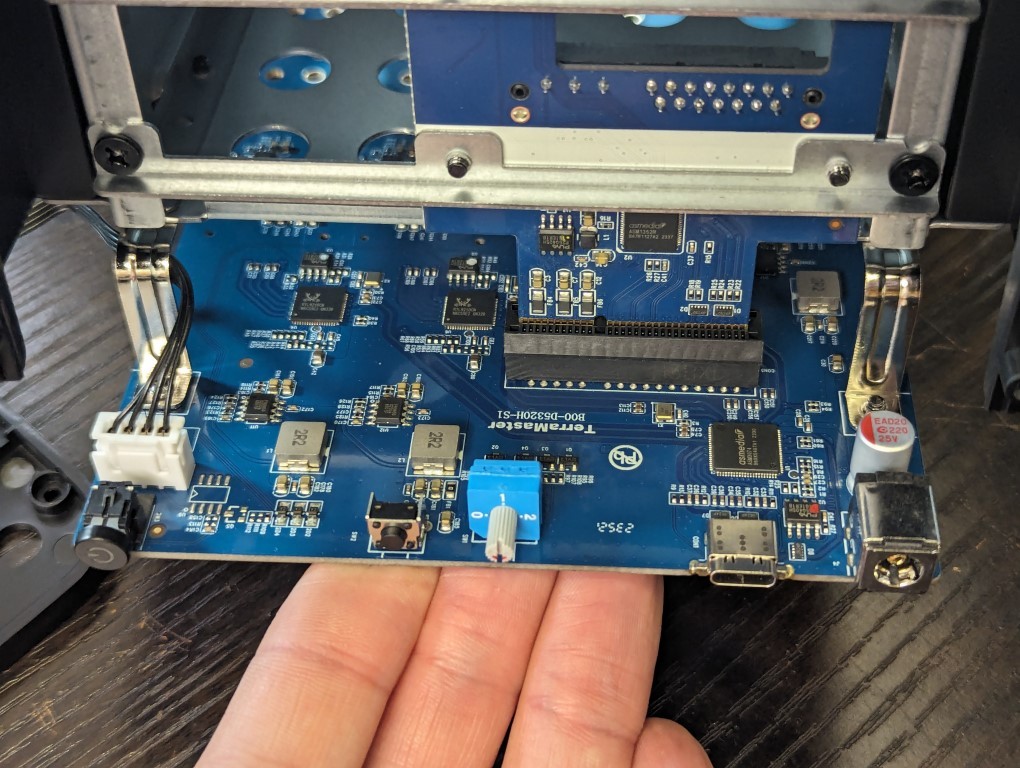
Realtek’s contributions, while more commonly associated with their audio and network solutions, also extend to data interface technologies. Realtek chips are crucial for managing data transmission and ensuring compatibility across a vast ecosystem of computing and multimedia devices.
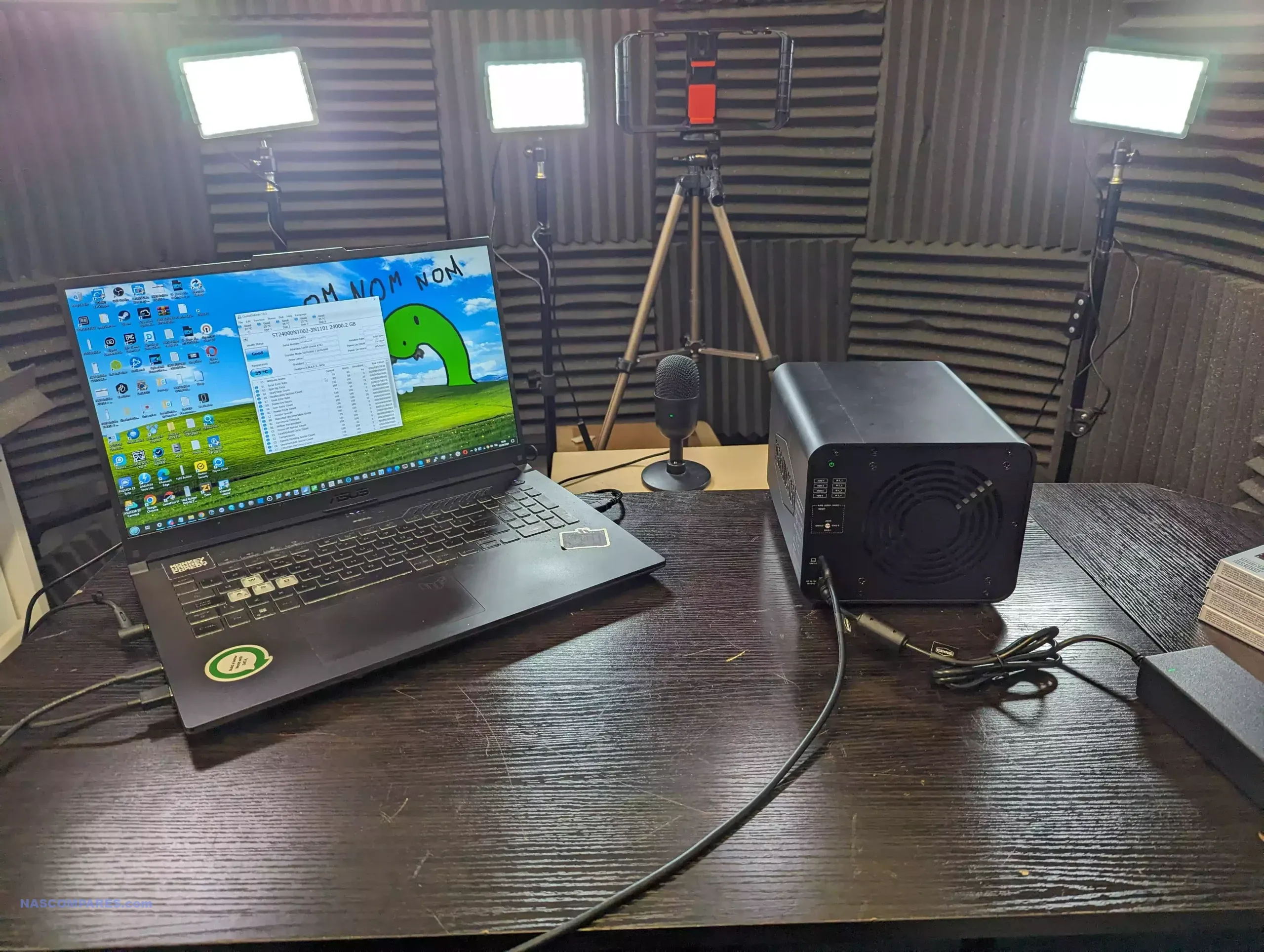
Their technology helps to stabilize and optimize the data flow, critical for the functionality of hybrid storage systems where data integrity and speed are paramount.
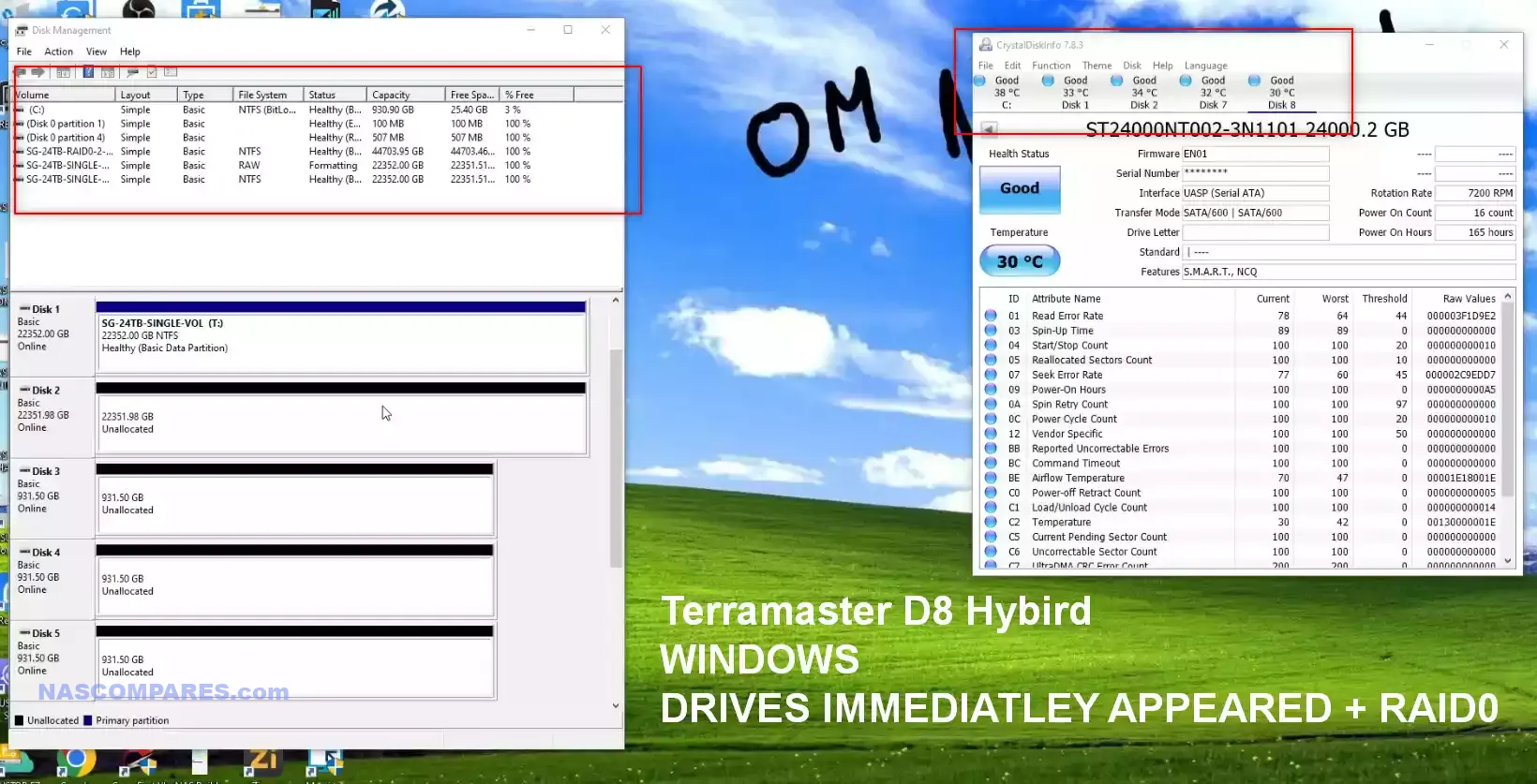
Detailed Performance Assessment
The performance of the D8 Hybrid was meticulously tested under various configurations to truly understand its capabilities and limitations. Configuring the device with two Seagate 24TB Ironwolf Pro Series HDDs in a RAID 0 setup, the system demonstrated robust performance with peak read/write speeds reaching 551/540MB/s.
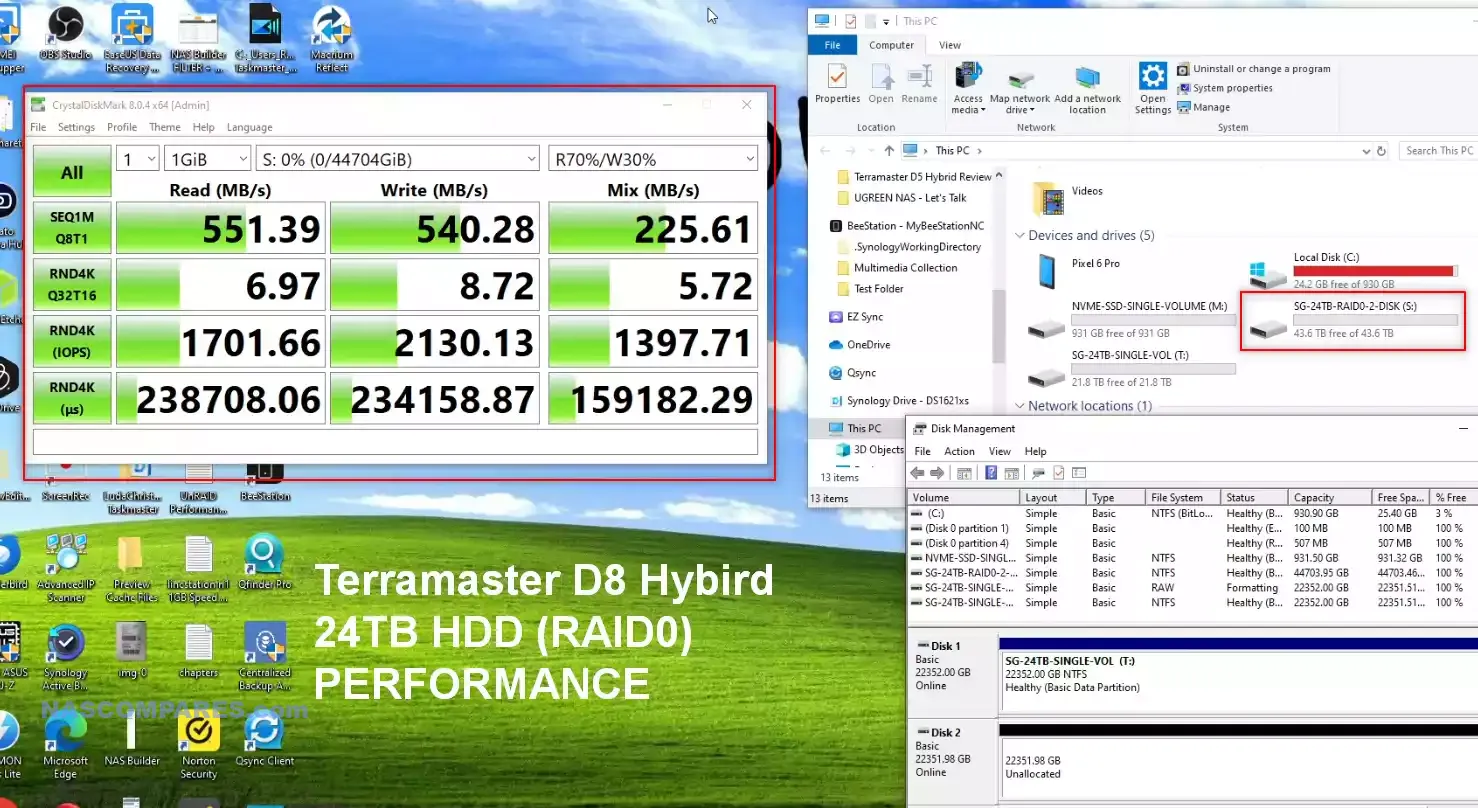
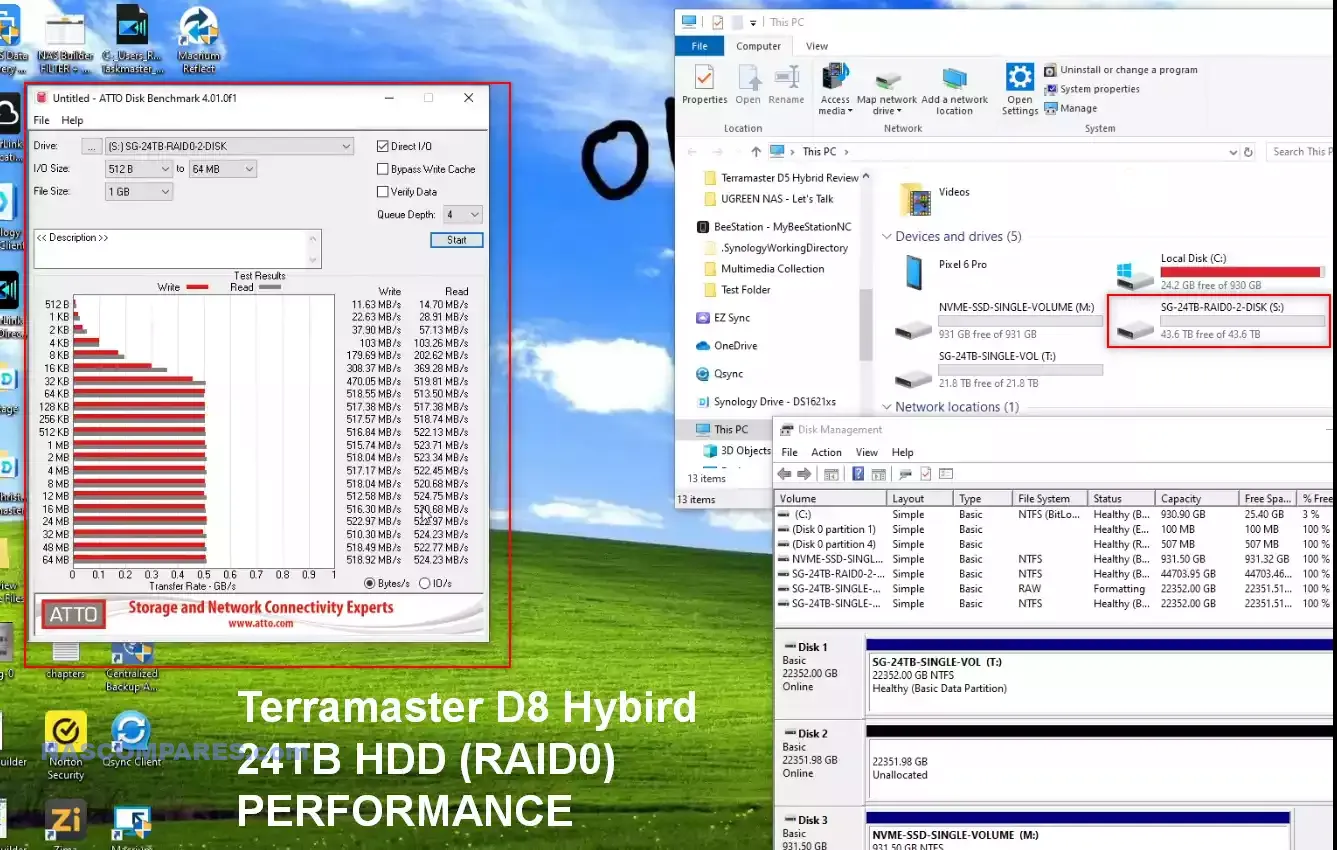
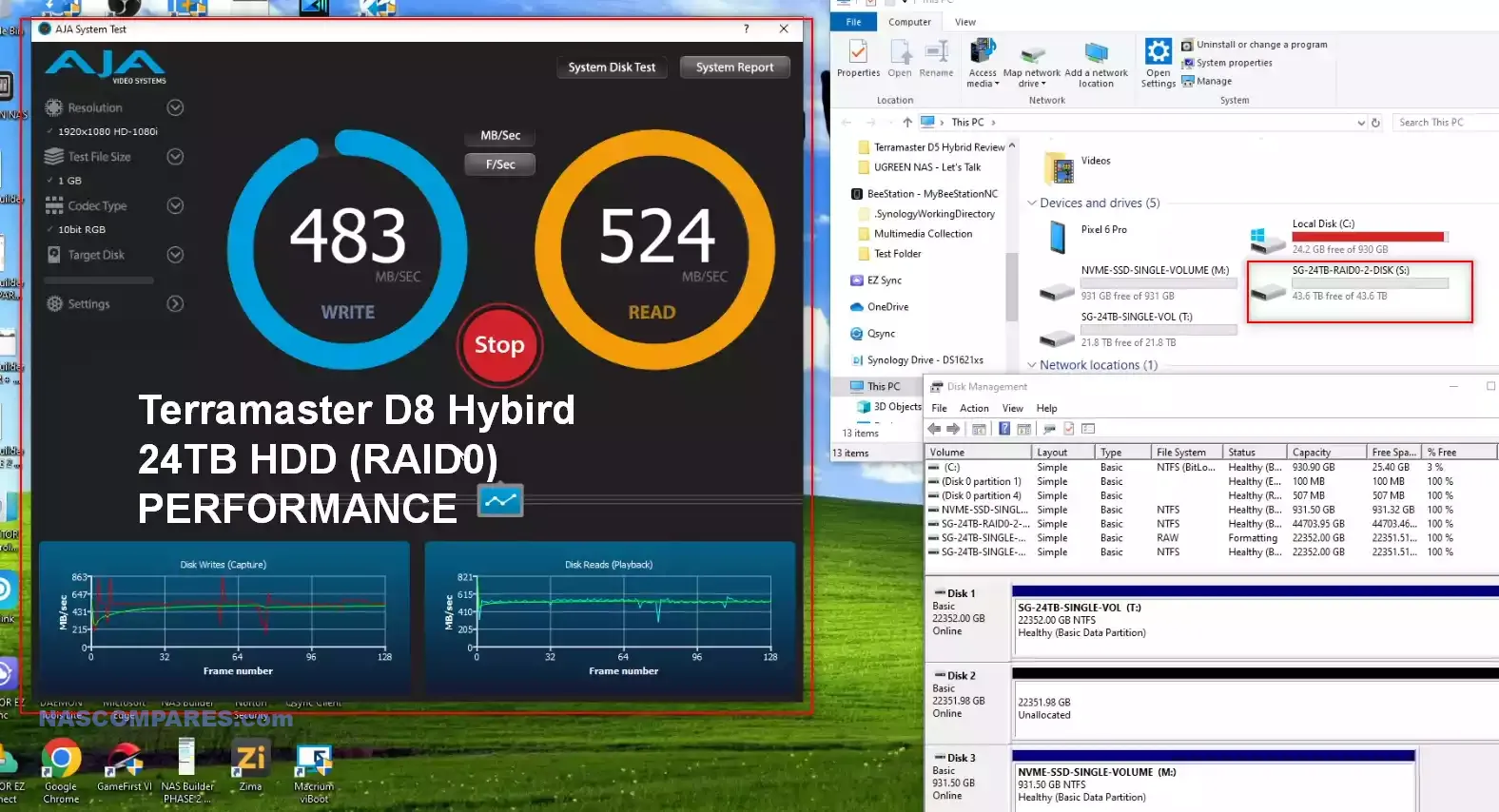
Next up, to put this into perspective (and measure what that RAID 0 actually provided vs singular use), I ran the same tests with a single 24TB HDD. The results were notable and though unsurprisingly half that of the RAID 0 Dual Disk pool, did also give you a nice idea of what full hardware RAID on this device (or an externally managed RAID Controller/OS-RAID) could have given us.
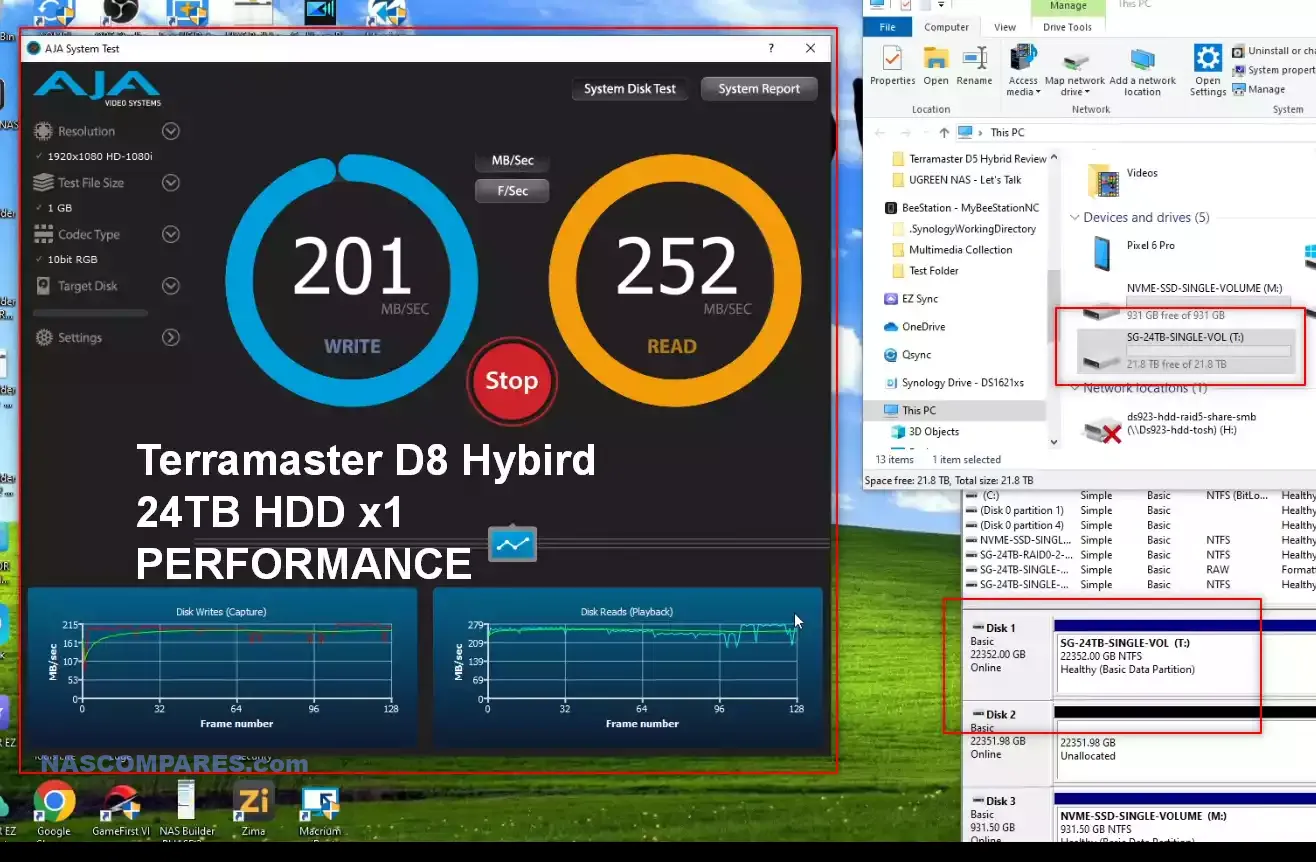
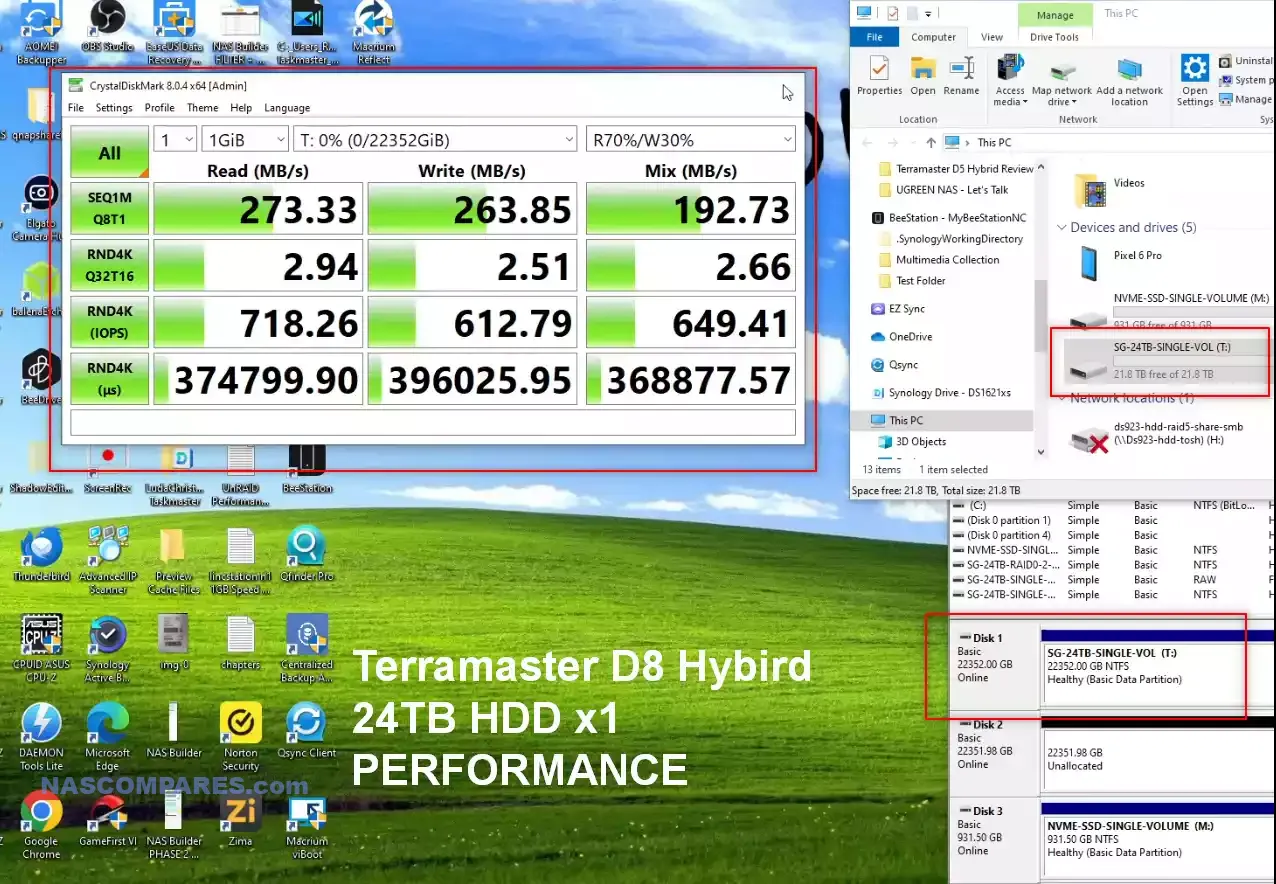
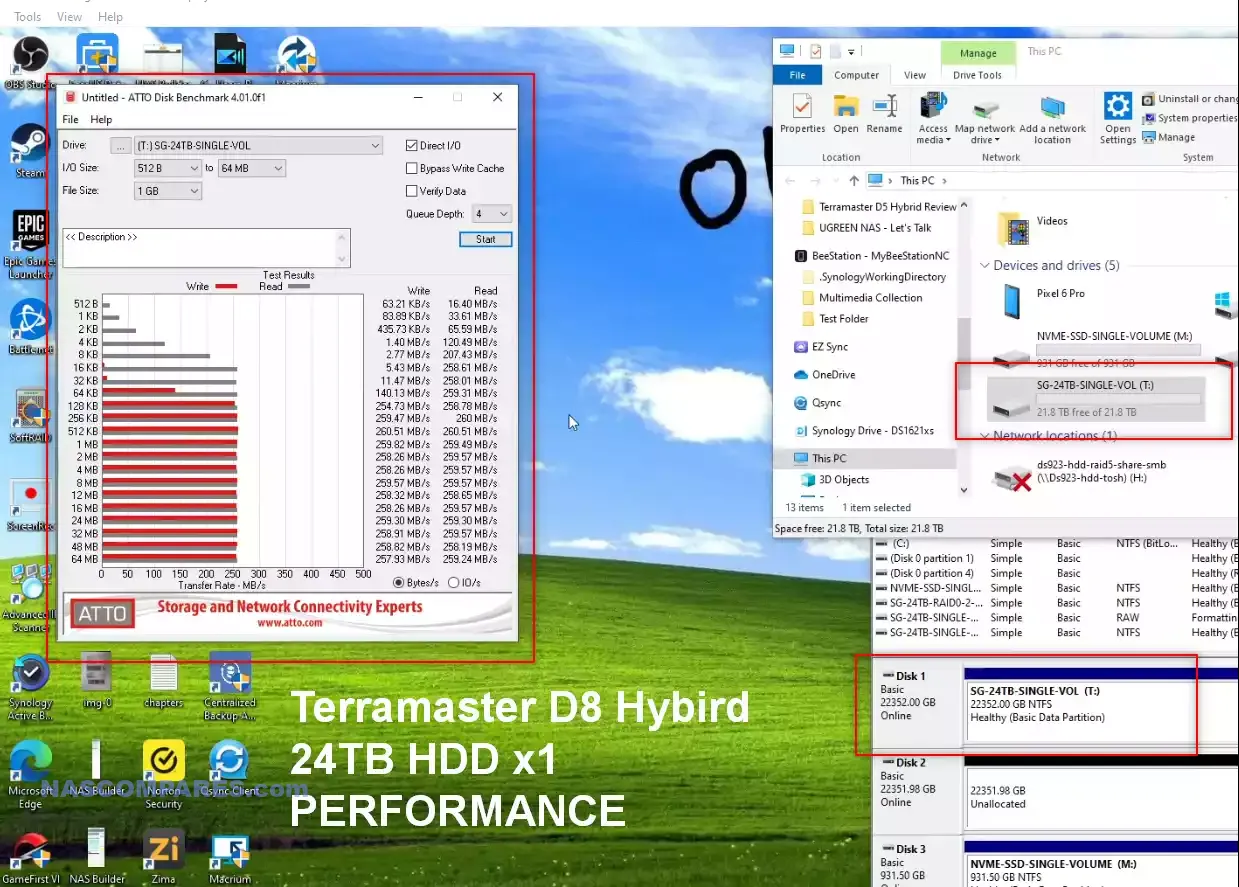
Finally, I ran the same tests on a single M.2 NVMe SSD in Slot #1 if the system (a Kingston KC3000 M.2 NVMe) and the results was practical full saturation of the 10G USB connection. If we had used an external RAID controller/OS-RAID, we still would not have been able to escape the USB 3.2 Gen 2 1,000MB/s maximum,but it could have improved IOPS/latency further.
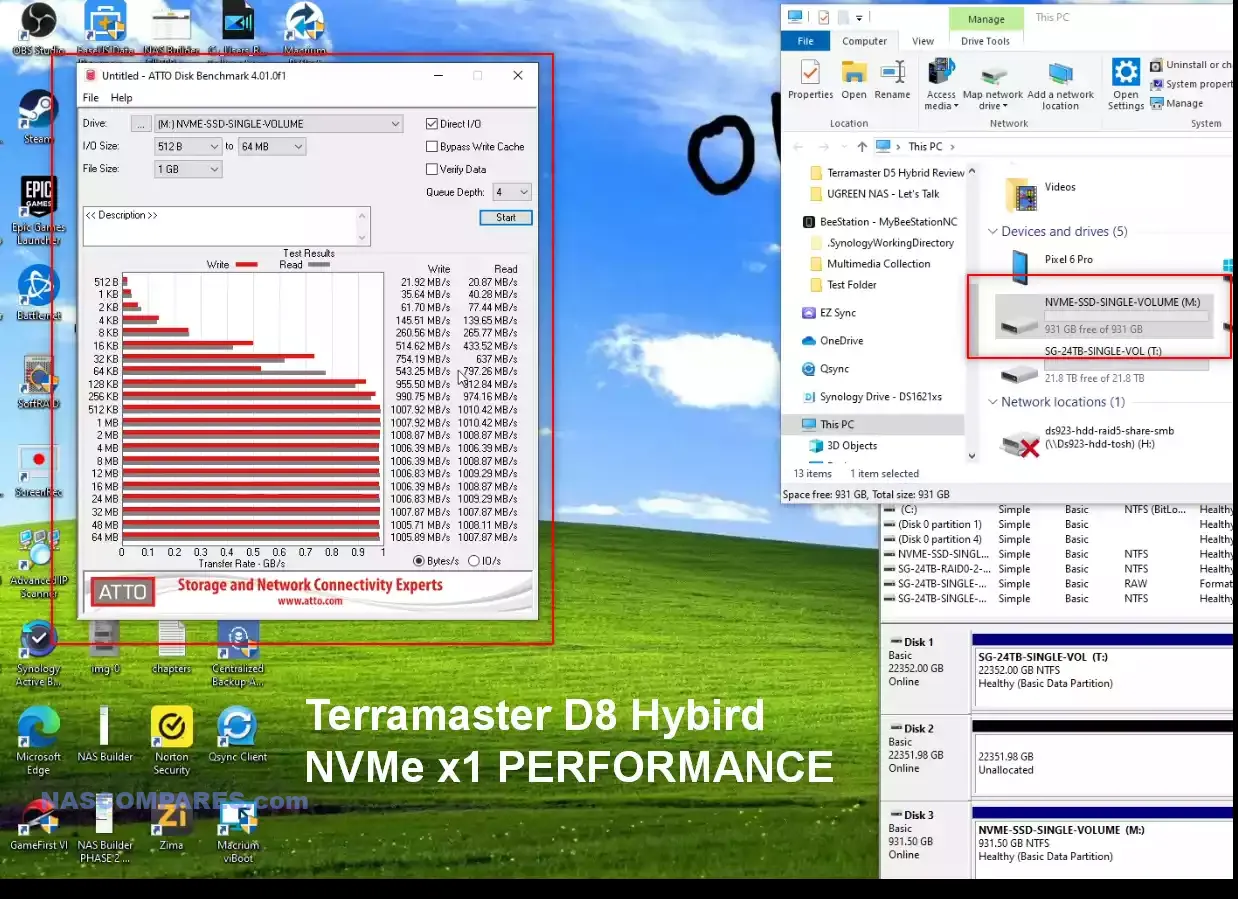
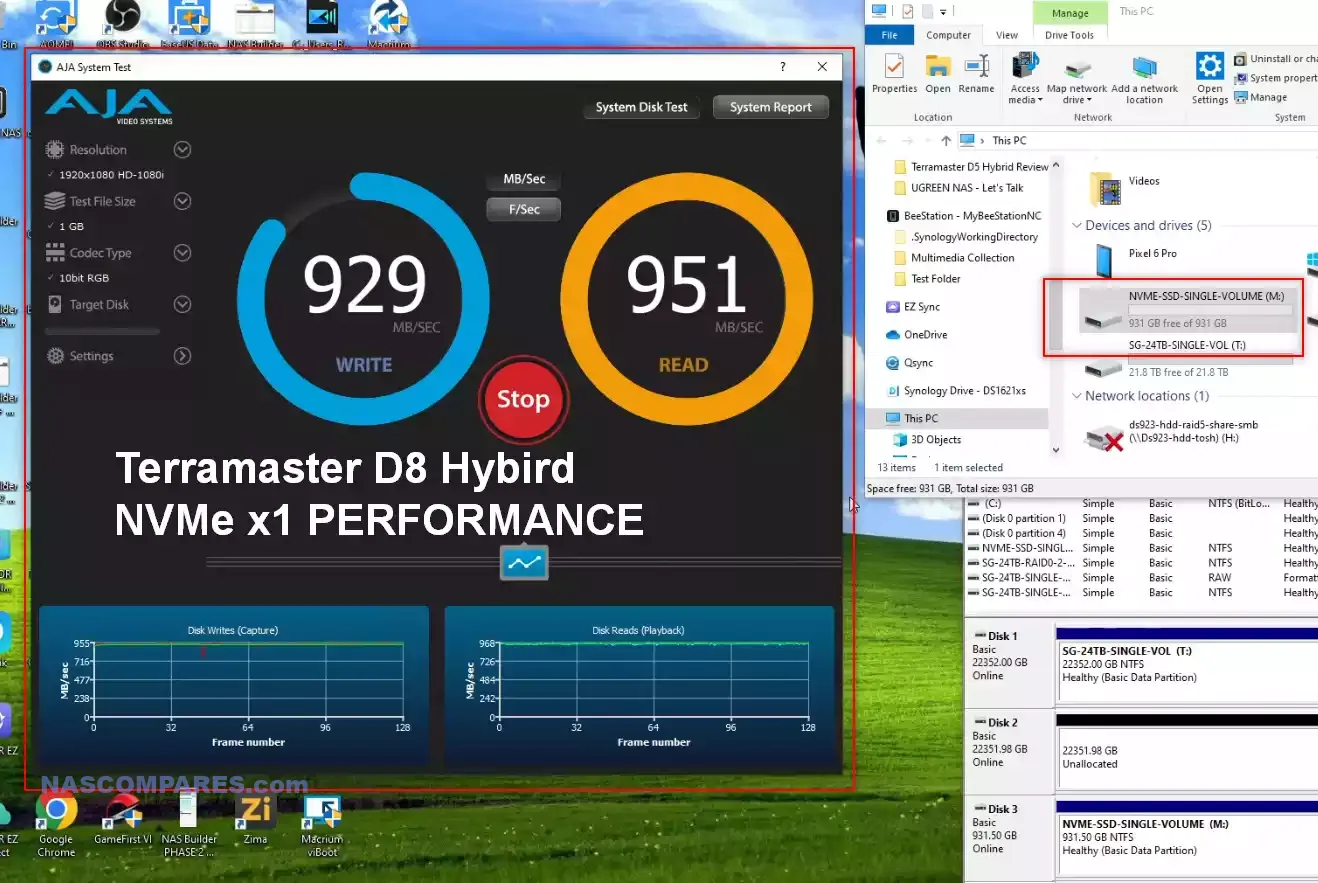
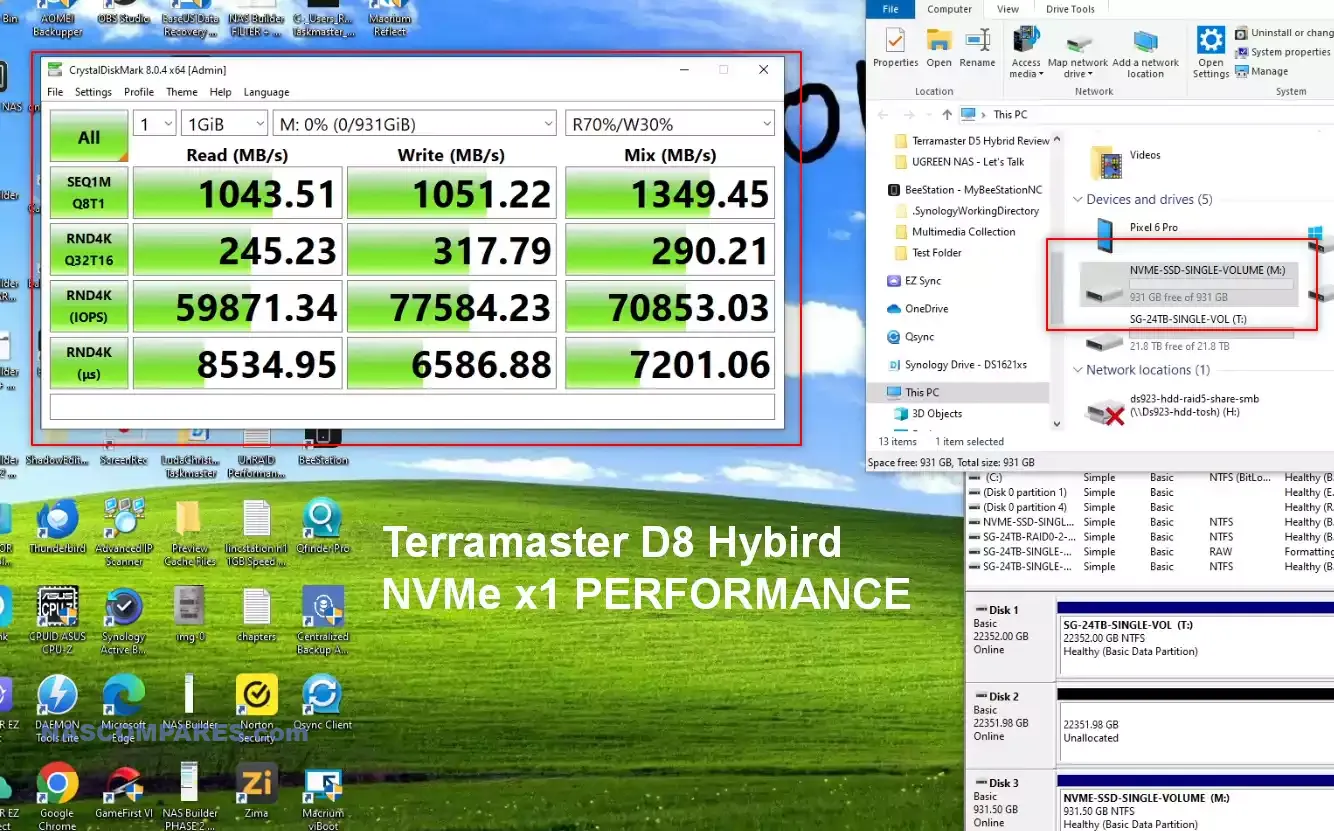
We have to look at this device as a JBOD (with a hint of a mirrored RAID) and therefore scale back our expectations a bit. With that in mind, I am happy with what the D8 Hybrid can do without a RAID in place. I could have managed this with my windows client and thrown on a few different RAID’s using software (softRAID or even just Disk Management and stripe etc), but that would limit the results to just my own system/setup. Overall, these numbers suggest a careful balance between performance and cost, ensuring adequate speed for standard tasks without the premium price tag associated with higher-end interfaces like Thunderbolt.
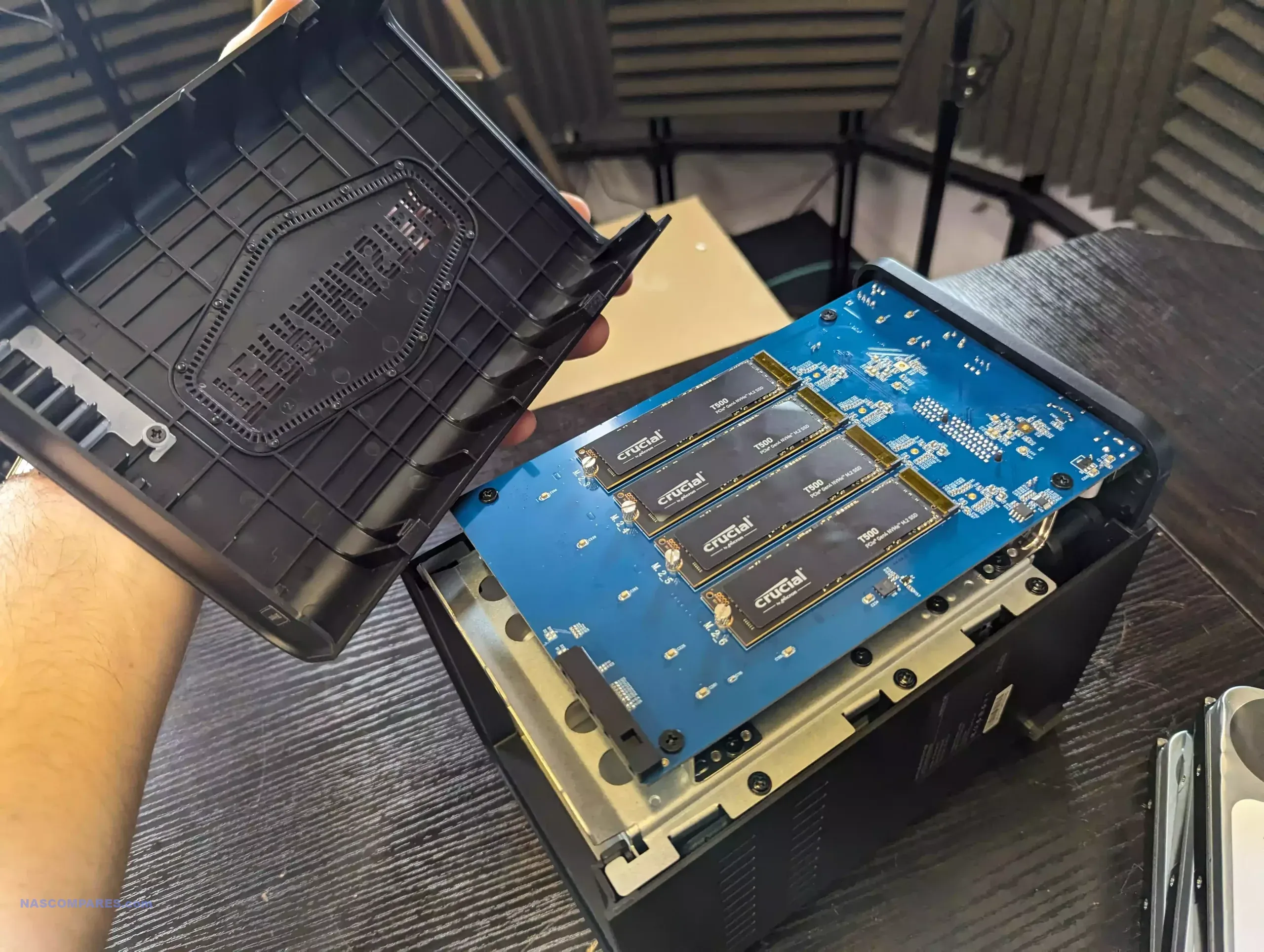
Is This a Comparative Market?
The D8 Hybrid is strategically positioned in the market to appeal to users who prioritize reliable performance over cutting-edge speed. It serves well for small to medium business applications, home offices, and creative professionals who require a dependable storage solution. The device offers an appealing alternative to more expensive options by providing sufficient speed for everyday tasks, including data backup and accessing large files, without compromising on quality or reliability.
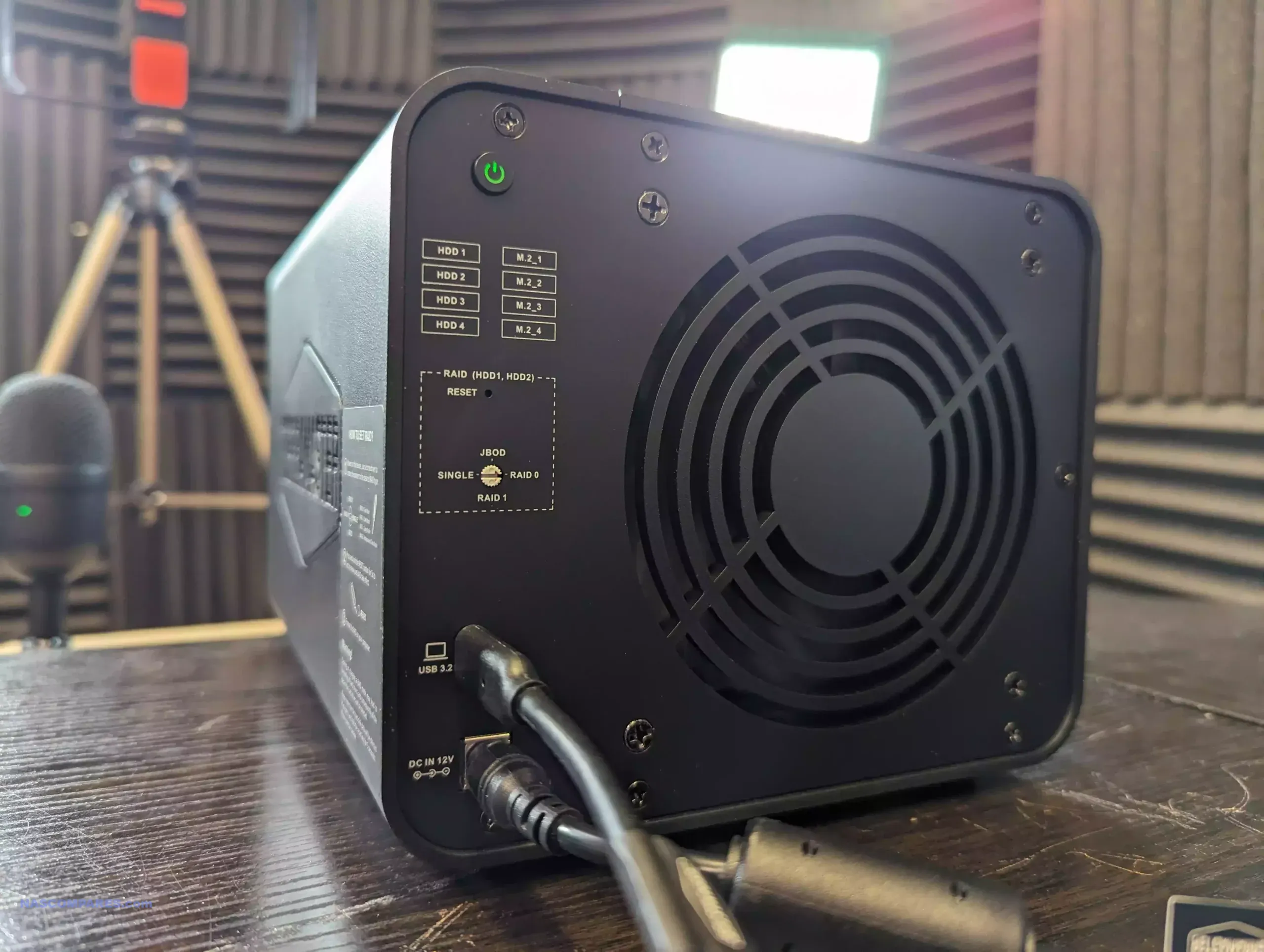
Its cost-effectiveness paired with versatile storage capabilities makes the D8 Hybrid a formidable competitor in the hybrid storage market. It’s particularly attractive for budget-conscious buyers who still require a robust storage solution that can handle a mix of data types and usage scenarios.
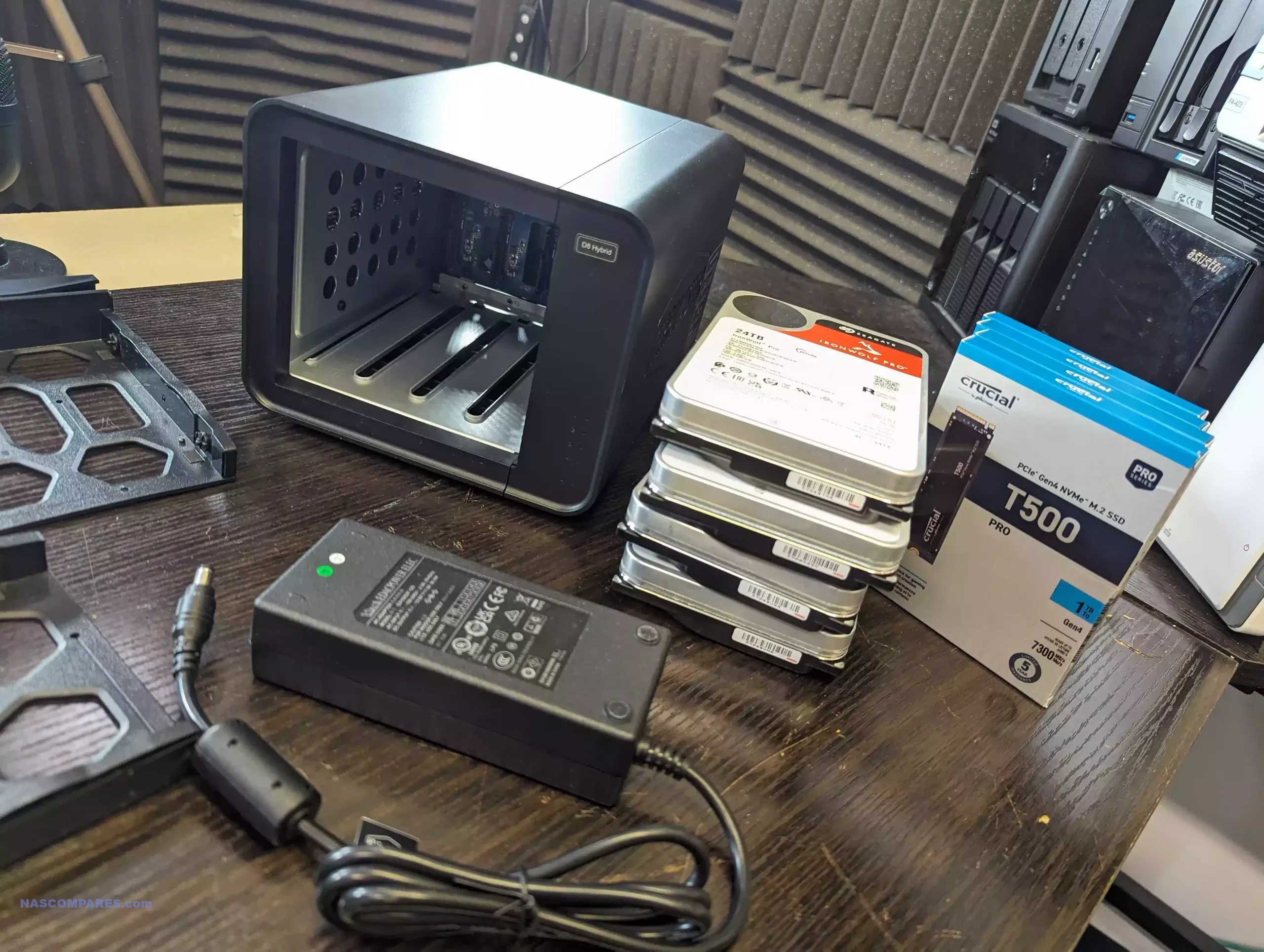
Final Verdict and Conclusion of the Terramaster D8 Hybrid
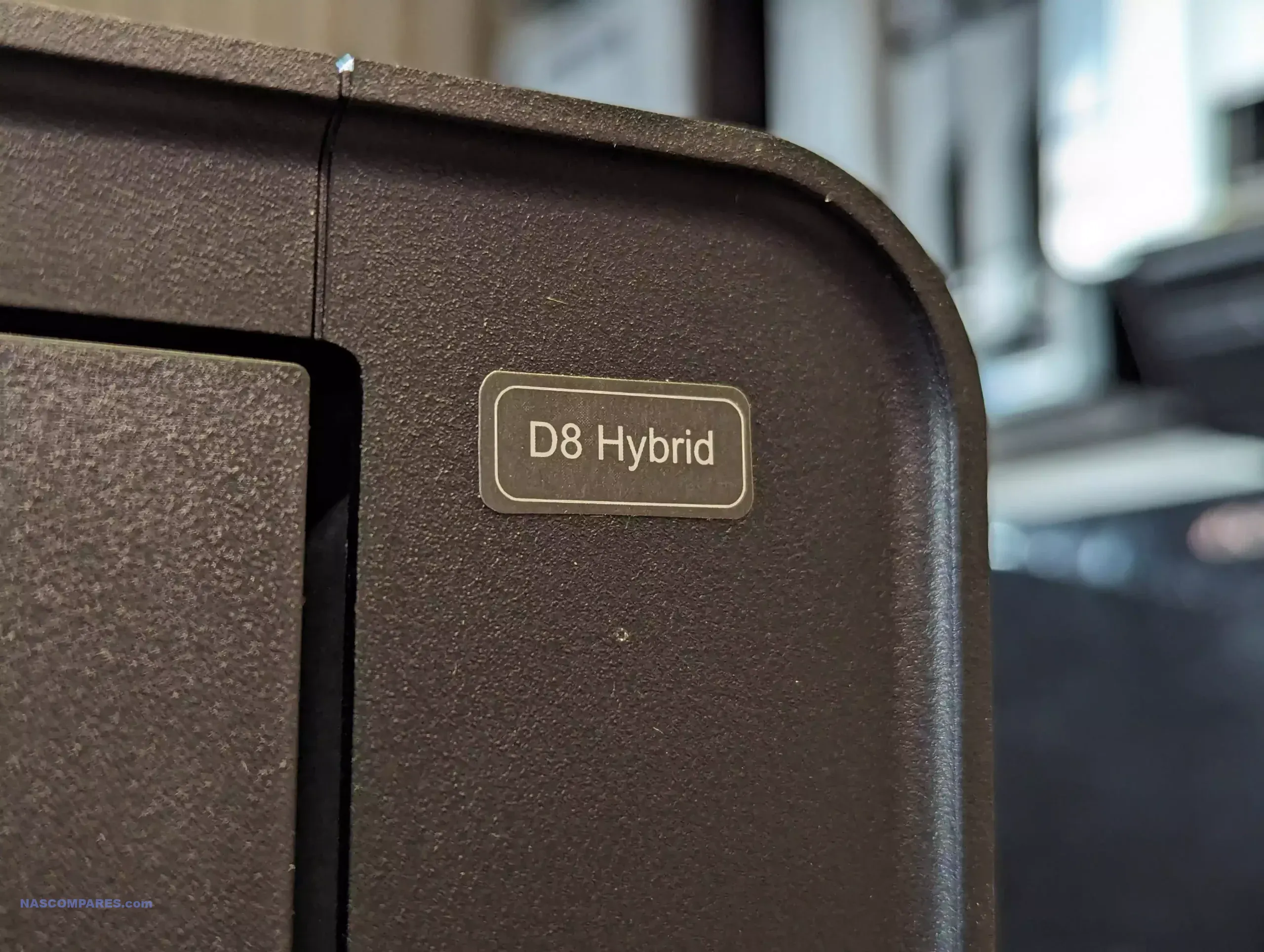
The TerraMaster D8 Hybrid excels in blending the high capacity of HDDs with the quick data access speeds of SSDs, housed within a single, efficient unit. The system’s design emphasizes user-friendliness with features like tool-less drive installation and low operational noise, making it an excellent choice for a variety of settings, from busy office environments to quiet home use. However, potential users should weigh the impact of the USB 3.2 Gen 2 interface, which, while sufficient for many applications, might not meet the needs of those requiring the fastest possible data transfer speeds. The absence of Thunderbolt technology is a noted limitation, but this is reflected in the D8 Hybrid’s competitive pricing, which targets a segment of the market more concerned with value and reliability than with leading-edge performance. The TerraMaster D8 Hybrid offers a well-rounded solution for those seeking a storage system that combines large storage capacity with respectable speeds at a cost-effective price point. Its performance, although not pushing the upper limits of current technology, provides ample support for most professional and personal storage needs, making it a worthwhile investment for a broad range of users. The thoughtful design and practical features, coupled with the device’s solid build and reliable performance within its defined limits, establish the D8 Hybrid as a standout offering in its category.
| PROs of the Terramaster D8 Hybrid | CONs of the Terramaster D8 Hybrid |
|
|
Need More Help Choosing the right storage soution?
Choosing the right data storage solution for your needs can be very intimidating and it’s never too late to ask for help. With options ranging from NAS to DAS, Thunderbolt to SAS and connecting everything up so you can access all your lovely data at the touch of a button can be a lot simpler than you think. If you want some tips, guidance or help with everything from compatibility to suitability of a solution for you, why not drop me a message below and I will get back to you as soon as possible with what you should go for, its suitability and the best place to get it. This service is designed without profit in mind and in order to help you with your data storage needs, so I will try to answer your questions as soon as possible.
📧 SUBSCRIBE TO OUR NEWSLETTER 🔔
🔒 Join Inner Circle
Get an alert every time something gets added to this specific article!
This description contains links to Amazon. These links will take you to some of the products mentioned in today's content. As an Amazon Associate, I earn from qualifying purchases. Visit the NASCompares Deal Finder to find the best place to buy this device in your region, based on Service, Support and Reputation - Just Search for your NAS Drive in the Box Below
Need Advice on Data Storage from an Expert?
Finally, for free advice about your setup, just leave a message in the comments below here at NASCompares.com and we will get back to you. Need Help?
Where possible (and where appropriate) please provide as much information about your requirements, as then I can arrange the best answer and solution to your needs. Do not worry about your e-mail address being required, it will NOT be used in a mailing list and will NOT be used in any way other than to respond to your enquiry.
Need Help?
Where possible (and where appropriate) please provide as much information about your requirements, as then I can arrange the best answer and solution to your needs. Do not worry about your e-mail address being required, it will NOT be used in a mailing list and will NOT be used in any way other than to respond to your enquiry.

|
 |
What IS the Digiera OmniCore NAS? Is it Worth $599?
New UGREEN NAS Expansion, DXP4800 PRO NAS and eGPU Revealed
Gl.iNet Flint 4 10G+2.5G Router Revealed @CES 2026
EVERYTHING NEW from Minisforum @ CES 2026
Gl.iNet Slate 7 PRO Travel Router (and Beryl 7) REVEALED
Minisforum N5 MAX NAS - 16C/32T, 128GB 8000MT RAM, 5xSATA, 5x M.2, 2x10GbE and MORE
Access content via Patreon or KO-FI
Discover more from NAS Compares
Subscribe to get the latest posts sent to your email.



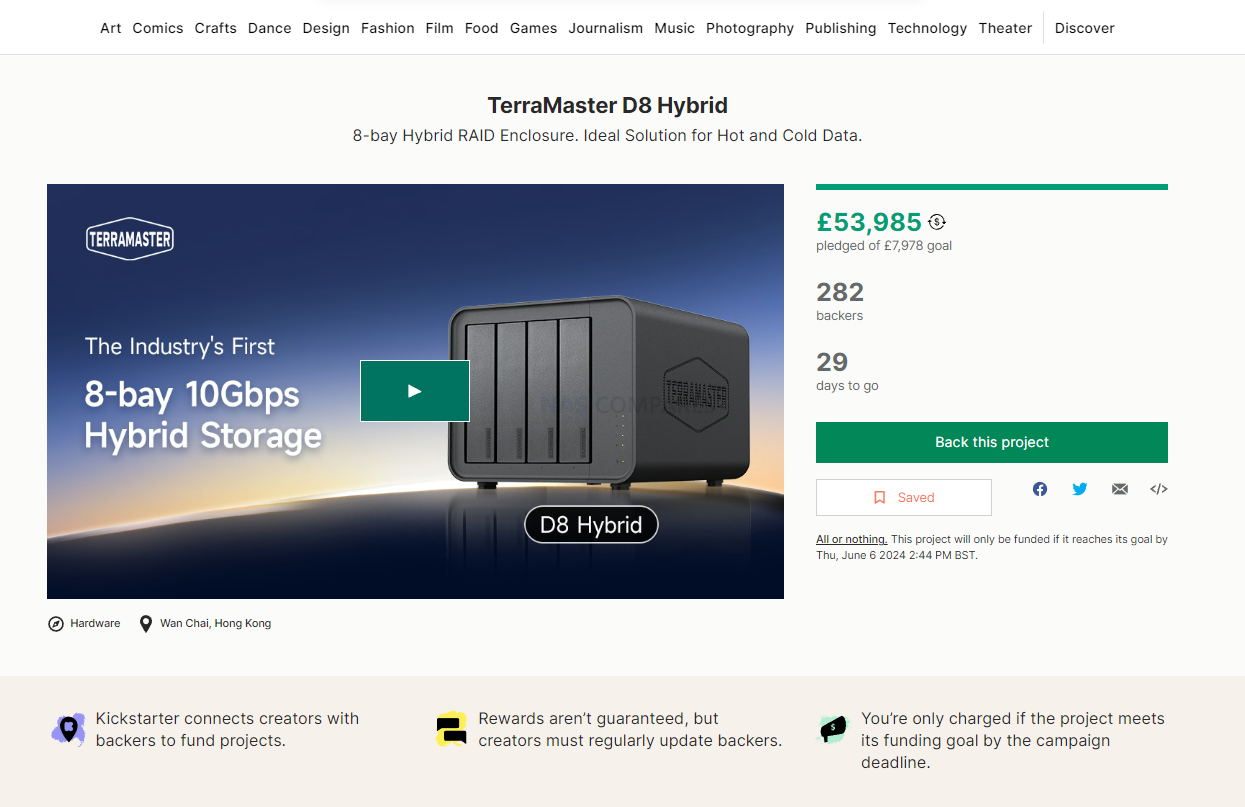




Maybe I could attach it to my DAC? 🙂
REPLY ON YOUTUBE
Have anyone the Terramaster D5-310 HDD Enclosure 5 Bay?? Wondering runing Raid5 with one spare drive …. Is it one of those in the background you have?
REPLY ON YOUTUBE
So if i understood properly i could get the new f4or2 425 plus connect them to a d8 . then i could use the f4 or f425 plus traid to mange these pool storage as part of my traid ?
REPLY ON YOUTUBE
????
REPLY ON YOUTUBE
Useless. USB 4 is a must.
REPLY ON YOUTUBE
Ethernet port? It’s wife ????
REPLY ON YOUTUBE
I need it.
REPLY ON YOUTUBE
Way too slow. Need USB 4.
REPLY ON YOUTUBE
Way too slow. Need USB 4.
REPLY ON YOUTUBE
DAS + mini PC = NAS
REPLY ON YOUTUBE
Can I change the fan out?
REPLY ON YOUTUBE
It took me one month to watch this 15 minute video, so many details to process. Well done review. ????
REPLY ON YOUTUBE
As a backup device that can go offsite, it ok. Can you cache the sata drives using nvme drives for faster transfers?
REPLY ON YOUTUBE
My go to YouTube for NAS reviews, question: How about running temperature?
REPLY ON YOUTUBE
For VFX work and video editing and 100mp HDR images and IBL HDRi this is perfect.
REPLY ON YOUTUBE
Darn it! Everything you said was true but it didn’t help me. I am in a different bucket of people.
I do’nt know what I want!
I ended up putting 2x24TB HDDs in bay 1+2 and am using raid 1. That drive backs up everything else on the network including smaller 4TB hdds and multiple 2TB SSDs. I have the important stuff backed up in the cloud so I don’t mind putting everything in the same box.
REPLY ON YOUTUBE
What’s the difference between single and JBOD on that little RAID mode selector knob? For a DAS I’m interested in direct access to individual disks, including serial and SMART data, and it’s not clear which mode offers that functionality.
REPLY ON YOUTUBE
I am switching from a huge tower to a tiny mini pc (which is more powerful) but what do I do with my large 3.25 drives? Put them in this thing!!
REPLY ON YOUTUBE
I have a Mac Mini M4 which makes a way better Plex server, video surveillance server, etc – I want to also make it my NAS. My thinking is to install openzfs and set up a raid5 from the 4 drives as well as use the 4 NVME drives as both read and write cache using a command line sudo zpool add tank cache nvme0 nvme1 — is this a sensible plan, or am I missing something critical?
REPLY ON YOUTUBE
I am a school teacher with more than 20 years of files and material. I didn’t know what the flip you were talking about.
REPLY ON YOUTUBE
This guy needs new teeth
REPLY ON YOUTUBE
You’ve got a lot of good stuff to say but I have to play your videos at .75 to understand what you’re saying. And when you use terminology like “1 gig” that’s ambiguous.
REPLY ON YOUTUBE
Could you review the new one that is 20Gbps
REPLY ON YOUTUBE
Mini pc ceph cluster
REPLY ON YOUTUBE
I wish I could have a private conversation with you I really need some suggestions on what kind of DAS I should get in order to manage ultra high capacity HDDs such as the EXOS 28TB.
REPLY ON YOUTUBE
My PC died, I bought a minipc to replace it but it has space for only 1 NVMe, this would allow me to access the drives from my old PC.
REPLY ON YOUTUBE
Amazon is asking $299 for this today. Given the rather constrained RAID functionality, it’s hard to see the appeal at the higher price point.
REPLY ON YOUTUBE
What a great breakdown
I will use my d5 for my music production. I anticipate it will work fine
REPLY ON YOUTUBE
Can you say if is it hot swap? thanks for your response
REPLY ON YOUTUBE
Would a Truenas system see individual drives for use in a ZFS pool? Thanks
REPLY ON YOUTUBE
What would be a good solution for dense media for video editing? I edit 5k and 6k timelines.
REPLY ON YOUTUBE
Needs Thunderbolt 4
REPLY ON YOUTUBE
Perfect for me. This plus a mini N100 pc would be perfect for my EMBY server. I don’t need raid.
REPLY ON YOUTUBE
Can I connect d5 hybrid with f2 212 nas?
REPLY ON YOUTUBE
this is currently £299 on Amazon UK
REPLY ON YOUTUBE
For what it’s worth, the TerraMaster D8 Hybrid is on sale on Amazon for 20% off at the moment, at least in Australia. That’s down from AUD$499 to AUD$399. Estimated shipping is a fortnight away.
REPLY ON YOUTUBE
How are the speeds to transfer from the NVME to HDD drives? (Ie without the data leaving the box)
REPLY ON YOUTUBE
It was ALMOSTthe perfect DAS. Too bad it doesn’t manage RAID5 and beyond, this is truely a missed opportunity.
REPLY ON YOUTUBE
A great idea as most people don’t need a NAS.
REPLY ON YOUTUBE
Appreciate the review. To answer the initial question, I think I fit the bill of a target demographic, lol. So, I bought a 4-bay NAS that should get me by for a while, but I immediately started considering how I might expand the system. Specifically, I just watched a video last night (Techno Tim) about how to improve the reliability and performance of TrueNAS. One point he made was to have NVMe SSDs in a mirrored vdev for the L2ARC, and another mirrored vdev for the SLOG, so as to reduce pressure on the ZPool. Watched a separate video on Hardware Haven where he reviewed the Aoostar WTR Pro (the NAS I ordered as a result of his video), and he demonstrated how you could use the M.2 E-key to boot from, and add 2 x NVMe SSDs for caching. This would only give me a single SSD per task, and Techno Tim was emphatic in saying RAID 1 fault tolerance is highly recommended for the SLOG.
So, what’s a guy to do? Well, enter this DAS solution. 4 x NVMe SSD slots, so 2 mirrored vdevs, one each for SLOG and L2ARC. And then an additional 4 x 3.5″ HDDs worth of storage. Seems like a perfect fit for upgrading a TrueNAS ZFS instance without having to fully invest in migrating to a new box. Then again, in the short term, I’m probably going to go the route of fully-upgrading the WTR Pro, and see about using the single SSD each for L2ARC and SLOG
REPLY ON YOUTUBE
I have 2 Samsung 990 Pro m.2 nvme drives. Would it be a problem with them in Raid 1 ? Right now on usb 3.2 Gen 2 I am getting about 660 MB/s which is fine. I just want a backup solution.
REPLY ON YOUTUBE
$400 in Canada. They said it’s very plastic. I am interested as I don’t want a NAS.
REPLY ON YOUTUBE
Totally overpriced in EU at a laughable price of over 1000 USD for a Terramaster D8, and it is not even a NAS.
REPLY ON YOUTUBE
199USD? In Scandinavia, it sells for 1000 USD.
REPLY ON YOUTUBE
Kickstarter, if you’re aware of the product – and are happy with the feature set and non-reviewed status – then there is no issue joining in primarily since you’ll be getting a significant discount – it’s an extra £/$100 today. As for this product, it’s a most excellent spicy meatball for many folks out there…obviously.
REPLY ON YOUTUBE
Only for $199. 299 is way too expensive.
REPLY ON YOUTUBE
Nice video. I’m thinking of getting one of these for video work with 2 x 16 GB HDD in RAID 1 for storage and 3 x 2 TB NVMe in RAID 5 for editing. Would this be possible?
REPLY ON YOUTUBE
The week point of this device is its USB commection. Truenas warn you to create a RAID over USB and I had also bad experience to do so ????
REPLY ON YOUTUBE
Thank you for your video and the work you are doing on your channel.
Every time I think that the product I’m looking for is out, I’m in some ways disappointed…
I’m looking for a fast RAID 5 capable DAS Thunderbolt 3 (or more) or USB4 with 4 to 6 bays…
I miss my old Drobo ????
REPLY ON YOUTUBE
Great questions, great video!
Thanks mate!
REPLY ON YOUTUBE
can I use 1 ssd sata with hdd in the same time ?
and ssd m.2 as cash ?
REPLY ON YOUTUBE
For me, I was looking for a more elegant solution for my Plex media.
Having 3 external drives taking up precious IO on my Mini PC was becoming unacceptable to me.
My current set up is a 4tb SSD inside of the computer, 1 NVME drive for 4K movies, and a 12tb HDD with a 250mb cache for everything else.
This device was perfect for my needs.
REPLY ON YOUTUBE
Damn it. Just bought a D4. Though why do you need NVME over USB?
REPLY ON YOUTUBE
I just have a hard time paying $300 for something with a plastic case
REPLY ON YOUTUBE
Thanks for this review. I’ve actually just taken delivery of the D8 Hybrid and was wondering if I can use a USB-C to ethernet adapter to connect it to Mac mini via ethernet instead of USB.
REPLY ON YOUTUBE
Please, what is the brand and model of this external usb power adapter?
https://youtu.be/57rJc3E8NLc?t=651
REPLY ON YOUTUBE
1. Sounds like an advertisement
2. for couple more dollars for the brand they could of used USB 20Gbps chip, or for couple dollars more USB4 controller and than its a heaven but single 10gbps link? ROFL i usually dont use these for single NVMe device and go for the USB 20Gbps models, twice the speed
So there is no benefit from going raid on the NVMe, youll get the same speed as 4 good HDDs [helium HDDs do 260 to 280MB/s sequential speeds, x4 and thats over 1gb]
REPLY ON YOUTUBE
im torn to either getting this or actual nas. i want to have storage so all my device can access the data for mp3s and movies. i want to be able to stream movies on my tv. just a simple hd files, not even 4k. therefore im not sure to get DAS or NAS for my situation. residential setup so all are gigabit / wifi6 network. can anybody help me on this, please?
REPLY ON YOUTUBE
Wood the d5 hybrid be ok for storage video family photo music and wat drives wood be best to do that hdd and hot drive nvme
REPLY ON YOUTUBE
Okay, been looking at the Terramasters on Amazon and no matter what they all seem to have over 10% in bad reviews, |I have many a external drive and want something reliable and even the two main ones have their bad bits as well as being OTT cost wise for just a bunch of disk storage. it’s a minefield to a degree.
REPLY ON YOUTUBE
i am new to nas. want to setup a budget nas. i wonder if zimaboard + d8 hybrid will be a good setup?
REPLY ON YOUTUBE
I have a ROG XG Mobile dock with a D5 attached for when I put my flow 13 on the desk so I can have my steam library sitting ready. I only have a 3.1 Gen 2 USB port available so not having anything faster wasn’t an issue for me.
REPLY ON YOUTUBE
This is a great review. I ordered this as an expansion for my two bay terramaster NAS. And it makes me feel better knowing I’m not really going to want to buy the fastest drives available since there is that bottleneck. So a budget case makes me buy budget drives. And I’m really going to be very happy with 900 mb/s read and write. I’m planning to basically make those first two drive bays mirror my NAS to give me an extra backup since my NAS is the only place all of my data is stored. Then I’ll use the m.2 nvme drives as a hot array for editing 4K video. I’m saying goodbye to working directly off my Mac! That said, I’m wondering what drives you recommend I get so I can get the max read and write this thing is capable of without spending more than is necessary? What drives will be optimal in this case to keep cost down but take advantage of the most performance? Thanks
REPLY ON YOUTUBE
Can the 4 3.5″ drives be set up in software RAID0? If so what’s the best software to use on Windows? And can it then be connected to different computers, e.g. desktop and laptop?
I’m asking because in my use case, it would be nice to be able to purchase 2 of these, populate with 2 x 18TB Seagate IronWolf Pro drives each, then set them up in RAID0 and cloning from one to the other as a local backup. It would work with the included hardware RAID onboard for now, but thinking of future proofing it’d be good to be able to utilise the additional 2 3.5″ inch bays to extend for future requirements to add in additional 18TB drives as required and then expand the RAID0 (even if having to reformat, as would then be able to clone everything back from the other enclosure once set up). The additional NVMe drives would then be possible expansions too, just for pure capacity if needed, rather than any RAID expectation.
REPLY ON YOUTUBE
there are alternatives to extend a nas (unraid /truenas ) but getting better performance.. (probable is avoiding the usb-c and use a ls mini sas? )
REPLY ON YOUTUBE
Love your videos for all the helpful information. I started watching your videos when I was considering the storaxa(?) NAS on Kickstarter and ended up NOT backing it thanks to the useful information shared in your videos. Also appreciated all the information regarding the recent UGreen NAS, especially the collaboration with Logan (TwoGuysTech) and others regarding the UGreen NAS.
I have also seen your reviews about the recently announced Terramaster F4-424 Pro NAS. I understand Terramaster’s TOS lags behind the industry leaders but from your video regarding TOS 6, I understand they might be catching up.
I wonder how well this D8 Hybrid might work with the newer Terramaster F4-424 Pro NAS with TOS 6 – especially if there might be any extra features in TOS 6 for Terramaster branded DAS such as the D8 hybrid? Similarly, wonder how the D8 Hybrid might work with other (non-Terramaster) NAS devices? Any chance you might be working on videos for either of these scenarios?
Thanks as always and keep up the great work ????
REPLY ON YOUTUBE
Hi. Yes interesting thing. So it is possible to setup raid in the H8 from a NAS! Is this hardware raid still from the NAS?
Utilising the (hardware/software?) raid in the H8 in the first two bays? Also putting the other single drives in some sort of raid – would this be software raid?
Thanks..
REPLY ON YOUTUBE
I have the terramaster d5-300c with first 2 bays that you can select jbod or raid, if you select jbod it fails after a week and dont detect any drives, due to that i wouldnt trust this and use anything but raid
REPLY ON YOUTUBE
Now that I think about it, how many NAS models manufactured by TerraMaster have Thunderbolt? Probably very few if any and if they were looking to produce a companion product to their lineup they would have to go with the ubiquitous USB.
REPLY ON YOUTUBE
what if your running it from a 2 bay F2-424.. will the 2 bay amazingly be able to supply raid 5,6,10?
REPLY ON YOUTUBE
????… hehe
REPLY ON YOUTUBE
I use a similar device for Plex. I don’t need RAID for Plex since I have never had any issues with my JBOD setup. Since RAID is not a backup I just prefer to have a simple set of disks with my media files. If I lose a drive I will just re-build my library. Also this device would be nice because the NVME drives could be used for downloads and Plex cache/transcoding disks. So this could be plugged into and old Dell OptiPlex and would be a great upgrade for Plex.
REPLY ON YOUTUBE
USB HDD/SSD boxes are ALWAYS problematic for me. I run a Mac mini as my NAS and when using USB enclosures I always have disks randomly disconnecting on me. I’ve had enough so I went Thunderbolt. 150% more expensive, 100% less headaches.
REPLY ON YOUTUBE
USB4, 4 SSD slots, 2 HDD trays. That is the magic combination for something like this.
REPLY ON YOUTUBE
Yea I am in the small multiple data pools in one box group
REPLY ON YOUTUBE
is this good for someone simply using it with a 2012 mac mini w/16gb ram, to play their tv & movie libraries with plex?
REPLY ON YOUTUBE
Missed one use case. Data hoarders who have a bunch of old smaller hard drives and SSDs lying around that are too small to fit in current NAS.
For $199, it means you can make use of all your old storage and also not need it on 24/7 with primary NAS.
REPLY ON YOUTUBE
i like JBODs for the same reason i like unraid; if the pool fails and data is lost, it only loses the data on the dead drive, every other drive’s data is fully intact and retreivable. also makes it possible to use the hot swap bays as truly hot swap bays, effectively treating hard drives as massive usb keys for moving huge files around faster than any network could ever do it.
REPLY ON YOUTUBE
Hi there, sorry for posting this question here since it’s not about the Terramaster but have you done an idiots guide to setting up your own NAS. Im a photographer wanting to save some dosh and build my own rather then buying a synology and I was hoping you have a noob guide but I could not find one in your videos collection. And btw I really appreciate you videos, it has saved me from a few very impulse purchases that sounded to good to be true.
REPLY ON YOUTUBE
i’m surprised is already at 200k on kickstarter
REPLY ON YOUTUBE
Drop an Beelink EQ12 MiniPC on top of that thing and you have a powerful NAS.
REPLY ON YOUTUBE
so, this is a fantastic backup box for truenas, at least my build 4x16hd+4x500ssd, i just wonder how Qnap will see it, as a jbod box? please look into that, ill by 2, and have 2 offsite backups
or how it fairs with one of those new microcomputer boxes, or zema(sp?) board
REPLY ON YOUTUBE
This is great for video game emulation!
REPLY ON YOUTUBE
I’m a photographer and have backed the Kickstarter (€199 is an excellent price to performance). My main pc is a minisforum um790 pro with 64gb of ddr5 and I have a lot of external drives attached via USB4 and USB3.2 GEN2. I intend to house 4 hdds and 2 1TB NVME drives in the DAS. I’ll keep a 1TB system drive and a 2 TB work drive (both NVME ) in my PC while attaching 2 further ‘hot’ photo drives (2 * 2TB NVME) attached to the 2 USB 4 connections. I have a docking station (USB3.2) for other peripherals.
I think the logic is sound but if you spot any serious flaws please let me know… Oh I have a 14TB hdd attached to my router which holds backups of the important data from the other disks and additional online storage of my ‘best’ photographs. This is my hobby, not my profession
REPLY ON YOUTUBE
The shipping is outrageous
REPLY ON YOUTUBE
I have the d5-300c which is the older brother of this I guess. I have created arrays on the T6-423 externally once built work using just JBOD mode. however power off the D5-300c or reboot the NAS and the config is gone. Is it the same with this?
REPLY ON YOUTUBE
Since it has a JBOD port, I’ll strongly consider getting two of them to expand a cluster of two Dell VEP4600 VM hosts – they only have two internal SSD slots (M.2/NGFF SATA). So each cluster node would be connected to one Terramaster. Cost pretty much nothing compared to the base system and you don’t _have_ to use multiple bays, you can just increment once you have a reason to. Yes, performance will be limited, but look at me caring. Not to mention that what perf you get is much more dependent on the type of SSD you get (i.e. Micron 7450 MAX instead of a Samsung Pro model – only one of those two will be performing well for small IOs. You’d pretty much need 4 top of the line enterprise M.2 SSD or Optanes to even max out the USB interface on 4k writes)
Would be awesome if they notice the market opportunity and make one with two power supplies (i.e. an external one like on mikrotik)
REPLY ON YOUTUBE
6:33 You may need an avalanche hazard sign. ????
REPLY ON YOUTUBE
went with qnap tr-004 for das. no raid, no nas here, just a htpc with fractals big node that has 9 drives (10th impossible to install due to sata controller being right above the space for 10th drive). so, running the qnap in das mode, all great, drives nice and comfy and cool, software is rudimentary in das mode, but does display smart data. mind you, now i have 4 red plus drives which will be eventually replaced with 16tb red pro drives (since those are only 70$ more expensive then 12tb red plus drives – 4tb and 2yrs of warranty for 70$ is a nobrainer imo). so, those will run hotter, but i dont expect much more than these which are around 30c. true, they mostly sit idle, lol, since all my drives are just storage for htpc media. 91tb all filled in the big node. need. more. space. more. more. more! lol. cheers.
REPLY ON YOUTUBE
JBOD for a Proxmox server, that’s what I need most.
REPLY ON YOUTUBE
I would attach it to a cheap, low power mini-PC, with one or more 2Gbps ethernet ports, share out the SSDs as NAS and then use the HDDs to take frequent backup snapshots that could be periodically swapped out for offsite storage.
REPLY ON YOUTUBE
What usb c to barrel connector is that? Is the barrel connector a standard size?
REPLY ON YOUTUBE
This is for people who has slim laptop with one or two USB ports.
You get easily a lot of external storage space and only wastefull one of your precioous USB ports to have it.
REPLY ON YOUTUBE
I’ve reconsidered my position on the Tarramaster H8 Hybrid. If the NAS OS can manage the RAID array then the lack of hardware RAID 5 is far less perplexing. They could eat Synology’s lunch when it comes to expansion units if it can function that way in DSM7. Same for QNAP, Asustore and so on.
REPLY ON YOUTUBE
As a Qnap TR004 user i would have been keen to look at this unit if it had the hardware RAID onboard.
The Qnap does (and is price comparable) but only 5gb/s USB and no NVME.
My use case is as a photographer for photo storage (not generally live edited from but some decent performance to go through libraries etc is nice).
REPLY ON YOUTUBE
Apple has had Thunderbolt 40gbit since 2016. USB and manufactures have really been hindering performance out of serious laziness for almost a decade. 10gbit should be what 5gbit USB is right now. It should be for the cheapest garbage USB sticks and cell phones. It’s just not enough people are complaining to them to be forced to want to do something. Every motherboard and computer should have at least 1 20gbit USB port and USB4 should be an almost certainty when you’re not going budget build. The fact that everything around USB has been evolving at warped speed should have pressured manufactures to implement faster ports. This has just been terrible for consumers.
REPLY ON YOUTUBE
I think the D8 sounds very interesting, because I think RAID is a liability that I don’t want to pay extra for (I prefer no RAID at all). Instead, I just want to store most of my hot-access data to SSD’s, which have better file integrity compared to HDD as long as they are plugged it and receiving power, store some of my warm-access data to more affordable HDD, and then tell my OS to do a nightly backup of those two data pools to a third HDD data pool. I think that’s exactly what the D8 offer. I don’t need RAID, because if I run integrity check and one of the files in my hot-access or warm-access data pools got corrupted, then I can just restore them from the backup data pool. All I have to do is run an system-wide integrity check overnight once a week, and save myself the troubles with RAID.
REPLY ON YOUTUBE
This is a grift product from Terramaster capitalizing on people’s crowdfunding FOMO. At best, it’s a place to utilize old and unused drives. Everyone should avoid this.
REPLY ON YOUTUBE
I have way too much prior experience with USB attached storage. Not interested.
REPLY ON YOUTUBE
For me it was perfect and then fell with no network card. It is not a NAS in my opinion, its a glorified usb external hardrive. You can buy caddys that do the exact same job for 40 bucks. They wont run any applications, but they will use mutiple drives of different types. They blow the expansion arguement out of the water for me. Why have a processor when its running into another NAS that will more than likely do it already.
REPLY ON YOUTUBE
Still don’t think that just short of 1gb/s systained performace is great. maybe if it had a TB4 interface you could get what little over 4gb/s. Its much like the NAS systems based on NVME drives, very few home or SOHO users a have multi 10gb LAN system to support what NVME drives is capable of. in most cases people are limited to maybe a 2.5gbit lan a spinner based system is more than good enough unless you absolutely have to be able to stream high quality 4k or 8k videos. With a TB4 connection it would be a nice little box for especially Mac users where the max is what 4tb internal SSD ?
REPLY ON YOUTUBE
I am in Camp 7: walking by to look for a real NAS (with the S of Storage and not the E of Editting…) Will certainly not by a kickstarter thing.
REPLY ON YOUTUBE
In my opinion it is nice unit as a storage attachment for a Tiny/Mini/Micro low power Unraid, TrueNAS or Proxmox server ????
REPLY ON YOUTUBE
No! Not another kickstarter. TerraMaster is not new to the NAS market to go for crowdfunding
REPLY ON YOUTUBE
your opinion of the D8 HYBRID VERSION for a movie & tv show plex library via a mac mini? i’m currently simply using a 14tb seagate drive backed up w/carbon copy cloner on another 14tb seagate. thanks for your videos.
REPLY ON YOUTUBE
just want to know. the kickstarter for the d8 hybrid is that also a DAS? or is it NAS. It doesn;t seem to be clear if its DAS or a NAS
REPLY ON YOUTUBE
I’m looking to expand my storage options but am far from knowledgeable on the topic. I was hoping for a more down-to-earth review. Raid I get it, but I don’t understand how the NVMe drives fit into this solution. When connected to my Mac, would I actually see two drives?
REPLY ON YOUTUBE
Correct me if I’m wrong, but if in JBOD (or maybe I mean SINGLE) mode and using software RAID 1, the host computer has to send a copy of the data to each drive separately thus reducing the write speed (each drive can write at 1/2 the USB link speed). I recently noticed this after I played with the QNAP 4-bay DAS box TR004. Thanks for all your great videos, I have been enjoying them!
REPLY ON YOUTUBE
I could see this being an option for offsite, archival of a more robust NAS … If I could access it as a USB attached drive from my router through OpenVPN this would be a perfect “1 copy at a different location” option for the 3:2:1 data safety plan. Since my brother is getting my current router when I upgrade to WiFi 7 with 10 Gbe next year, I could talk him into keeping a box plugged in in a nearby closet. It’s easier as I’m already the family tech support.
REPLY ON YOUTUBE
cool
REPLY ON YOUTUBE
Compared to Thunderbolt and USB4, many motherboards supporting AM4 CPUs include a USB-C 3.2 2×2 Gen 2 port at 20Gbps. – This is much more cost effective than the upgrades required for a 2x10Gb Ethernet NIC. USB dual role is supported by Windows and is widely used for file access on android phones (MTB mode). so far only JBOD drive enclosures supporting dual NVM drives at 20Gbit speed are available, running ethernet over USB is technically feasible and supported by a number of SOCs (beaglebone) in USB-OTG mode. looks like untapped potential for low cost DAS and NAS based on controllers such as ASM3242 – expect new Chinese products in this space very soon.
REPLY ON YOUTUBE
Terramaster vs this ugreen?
REPLY ON YOUTUBE
This reminds me of a solution I used for a server a long time ago. This was back in the parallell ATA days. It was a two drives chassi that took two 5.25″ spaces in the chassis. It supported Ultra ATA 66 both for the individual drives and as the interface to the motherboard. It supported RAID 1 for the drives which made it extremely simple to use. For many years this remained our main server and every week one of the drives would be replaced and taken home by my boss. The rebuild didn’t take all that long and was done during the night. Besides the drive was swapped Friday evening and normally the company wasn’t at all active during the week end. We also had a daily tape backup done so this was second stage backup. One thing I learned early was that a tape backup was great, but just some times a restore wasn’t 100% certain to work even if it did a successful verify after the backup. Never had to use either backup before migrating to a better server.
Something that was interesting was that the drives used in this server was the IBM Deskstar 75GXP, the so called Deathstar drives after all the problems they caused. Thing is we sold hundreds of these drives and had very few that suffered the Click Of Death that the model became known for. When I presented our data in a discussion on a website I got called a liar, a IBM shill, a troll and all kinds of things. Still didn’t change the fact that for some reason I still can’t explain. The ones in our server stayed in use for many years and only got exchanged when we needed more storage.
REPLY ON YOUTUBE
Love your videos. Keep them coming.
REPLY ON YOUTUBE
I’m impressed with the slight-of-hand at 5:30 – incredible!
REPLY ON YOUTUBE
idk…..those ugreen boxes are looking mighty tempting
REPLY ON YOUTUBE
Yes. For me it’s mostly long term storage and mp3 streaming on Plex. It works well for that.
REPLY ON YOUTUBE
Seems like they made too many compromises. It may be somewhat ok for a person starting out with a nas. Thanks for the video…. ????
REPLY ON YOUTUBE
I am wondering if you ever tried anything-USB connected to TrueNAS and to create on it zfs…
try 😉
REPLY ON YOUTUBE